32 Untold "Harry Potter" Behind-The-Scenes Secrets I Never Knew About The Movies
- Oops!Something went wrong.Please try again later.
Hey! I'm Spencer, and I recently visited Warner Bros. Studios in England where they filmed the Harry Potter movies. I got to tour the lot and learned soooo many wild behind-the-scenes facts and secrets from the films – most of which you've probably never heard before – so I wanted to share some of the coolest ones with you here.
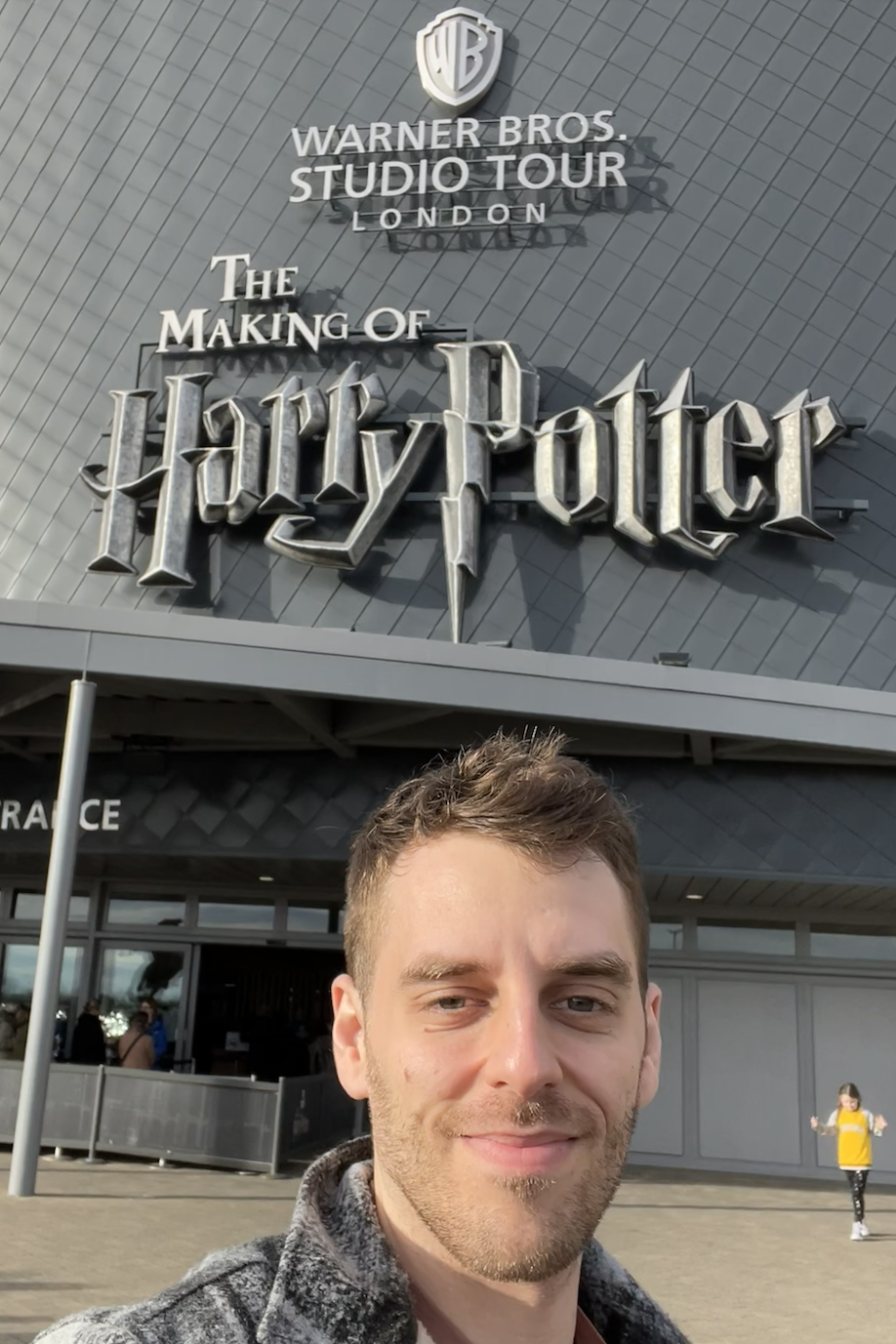
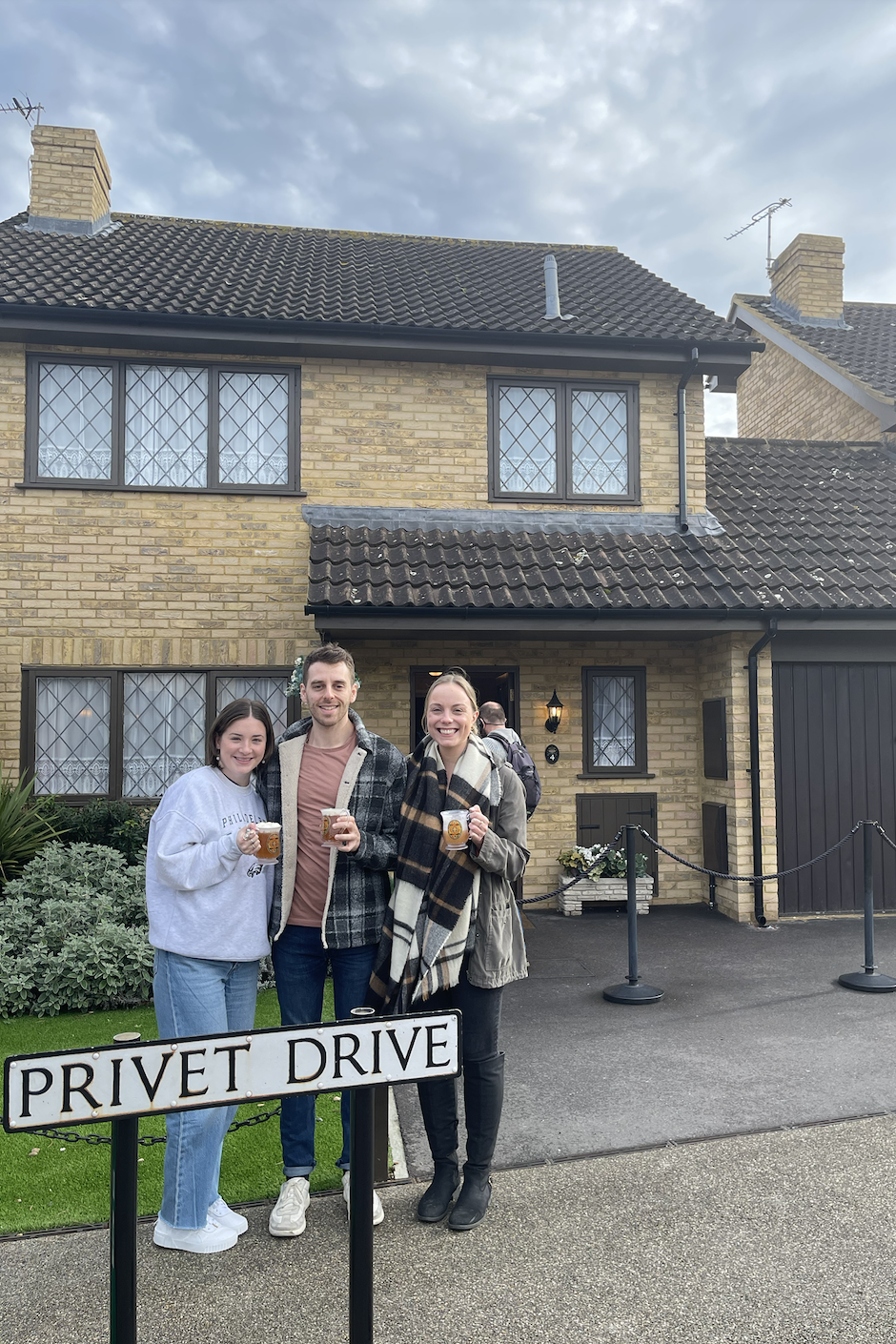
Spencer Althouse
For context, my relationship with Harry Potter has changed over the years, especially as a queer person. I'm a fan of the series but have struggled with the notion of separating art from the artist, due to J.K. Rowling's constant anti-trans beliefs and statements. Because of this, I noticed that I've distanced myself more and more from the franchise, which is unfortunate because so many people have found a home in it.
However, I do believe the world of Harry Potter is so much bigger than Rowling herself, and I will always appreciate its stars for speaking out against her and for advocating for trans rights (which are human rights!). If you, like me, feel impassioned about trans rights then you can learn more or donate here.
1.First of all, in order to film the exterior shots of Hogwarts in the first film, the Art Department built a massive (and super detailed!) 1:24 scale model of the school, and they filmed it in front of a green screen. The model is over 50 feet in diameter and took 40 different artists to build. An additional 50 artists were then responsible for maintaining it throughout the production of the film.
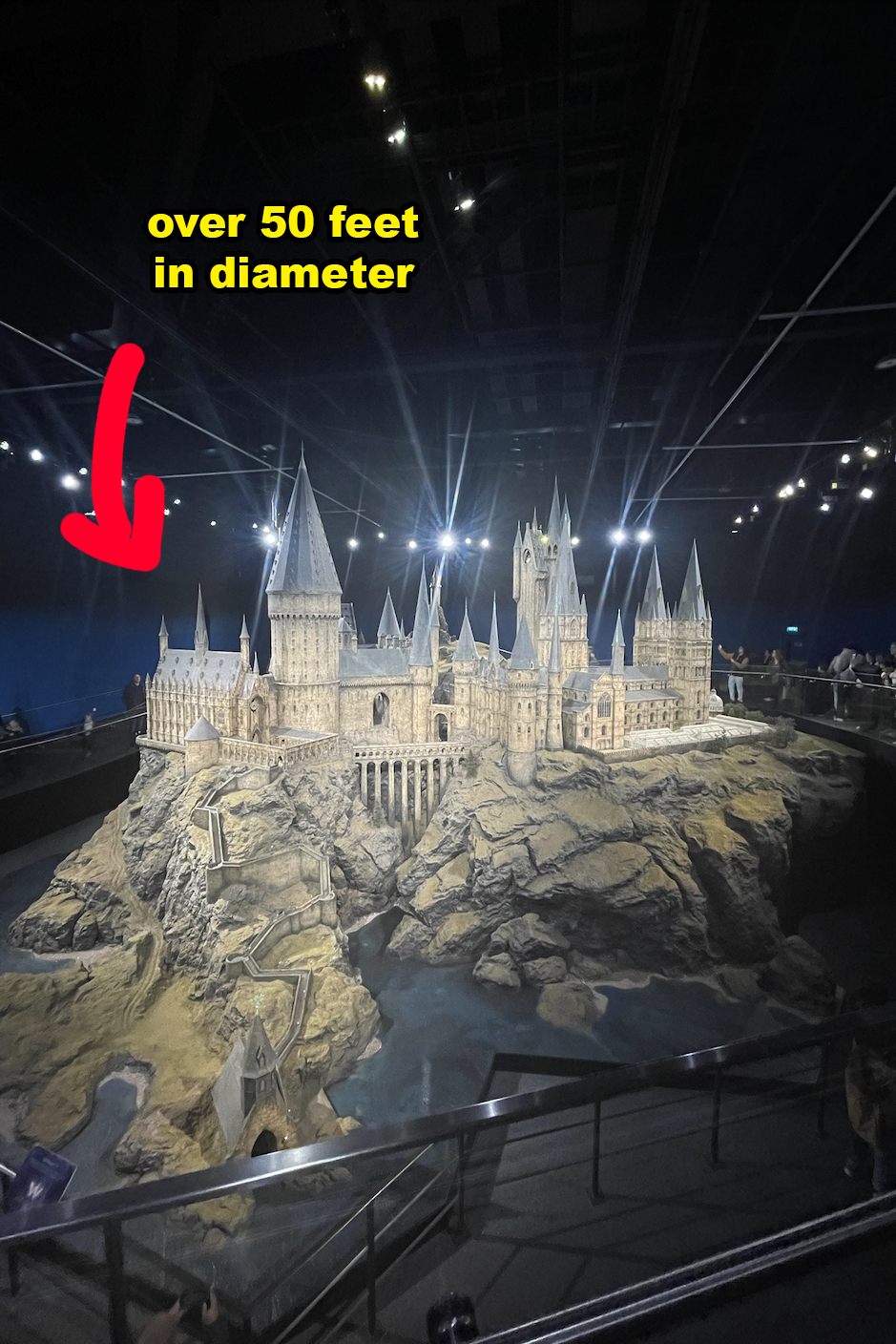
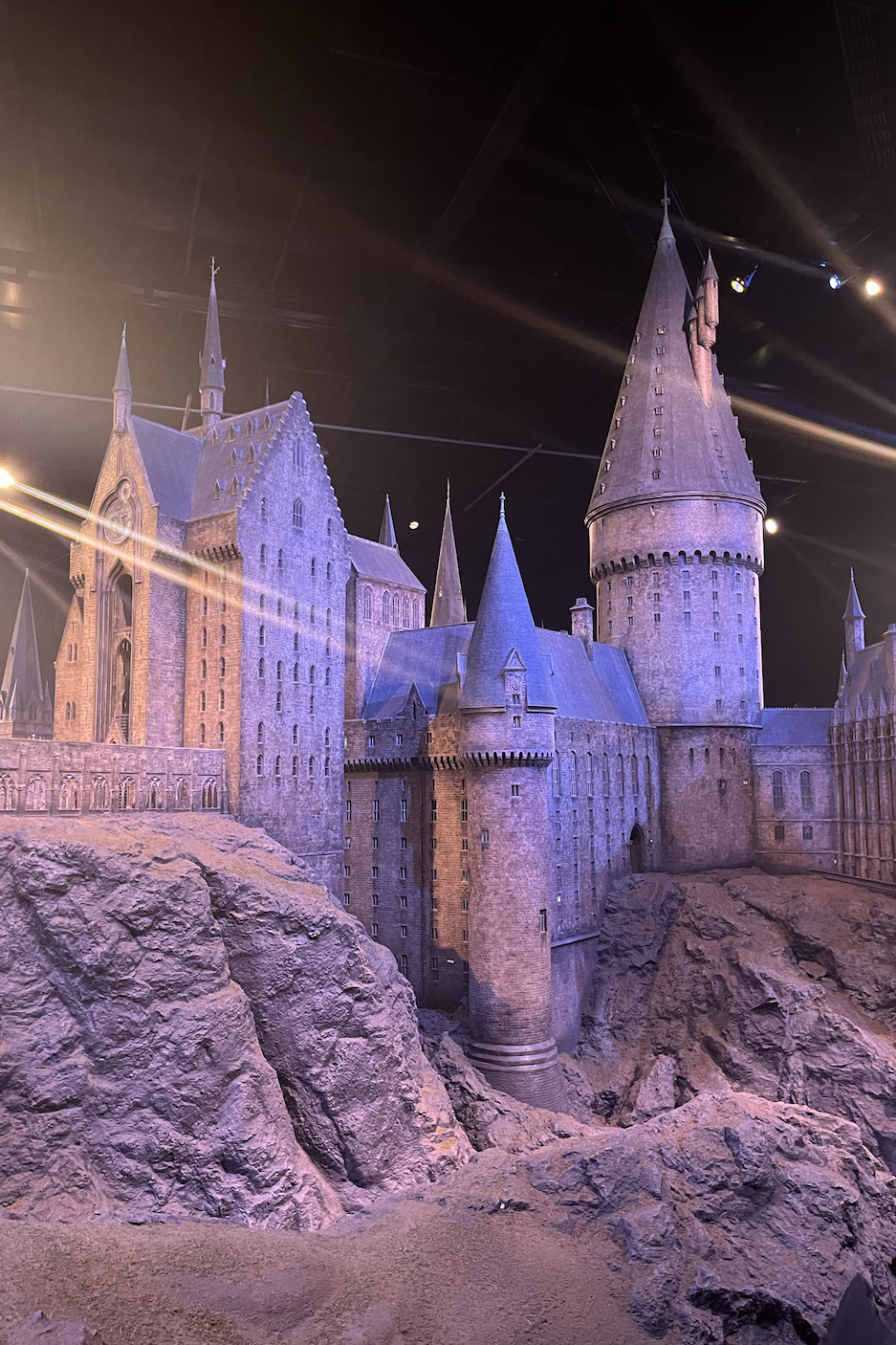
Spencer Althouse
FYI: Here's what the model looked like in Sorcerer's Stone, using digital effects, compared to what it looked like in real life.
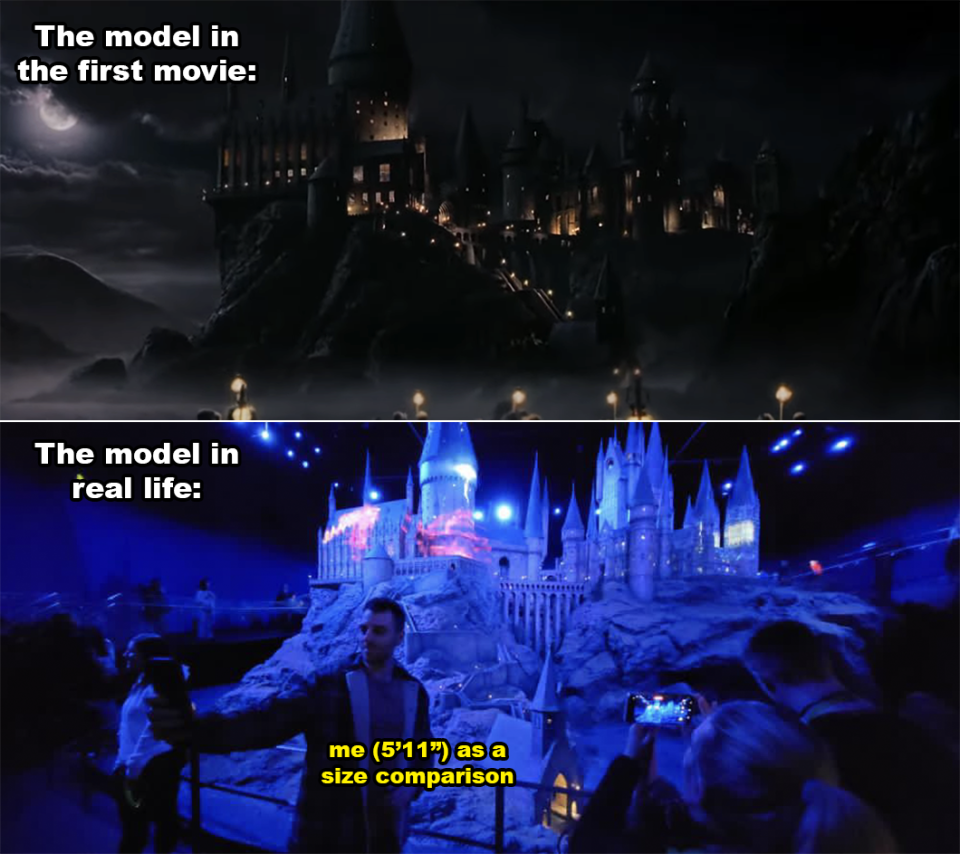
2.More than 8,000 visual effects shots were used throughout the movies, but instead of using CGI on Hogwarts, artists painstakingly installed hundreds of individual lights onto the model. This helped to give the illusion of students walking through the school, lanterns illuminating the campus, and rooms being occupied. Real gravel and plants and trees were also used to make the landscaping look as lifelike as possible.
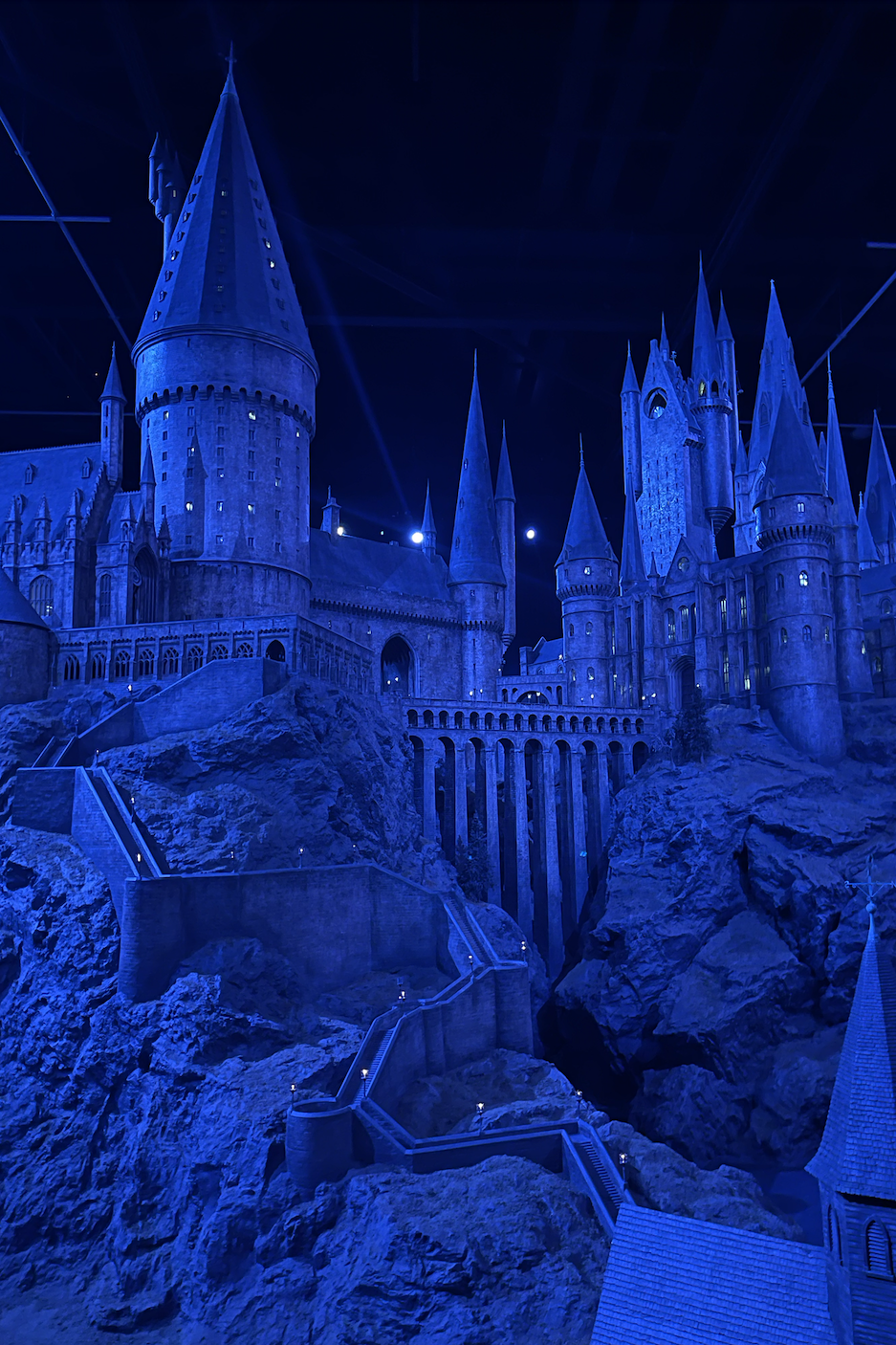
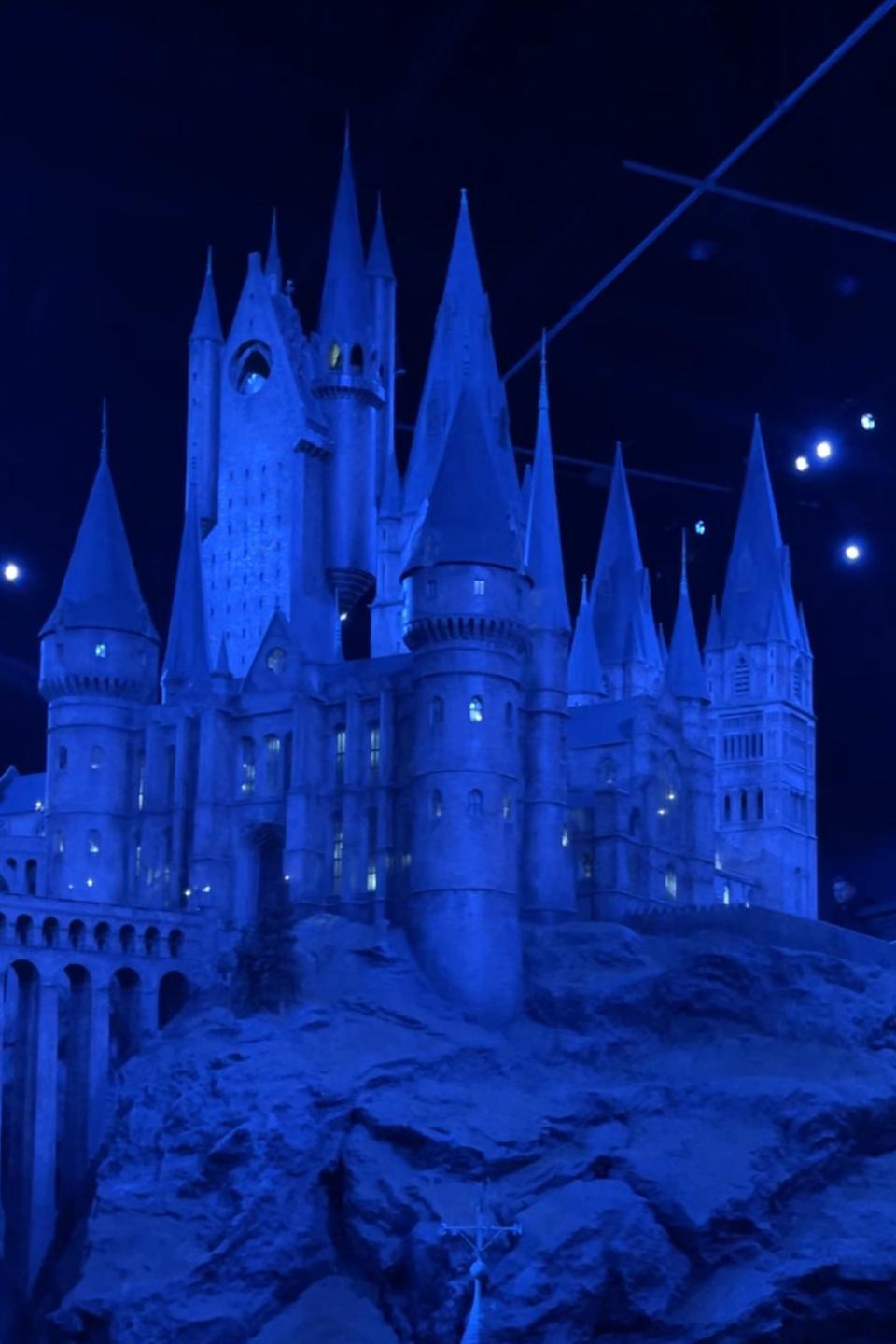
Spencer Althouse
3.Hagrid is about 12 feet tall in the books, but for logistical reasons they made him 7.5 feet in the movies. A massive animatronic head was even molded from actor Robbie Coltrane's (6'1") body, and his body double (6'10") wore it to perform all the scenes when they needed to emphasize the character's size. The animatronic head got more advanced as the films progressed, and its eyes and lips could be controlled and moved. In other instances, Robbie would film scenes in front of a green screen and then be digitally added in post-production.
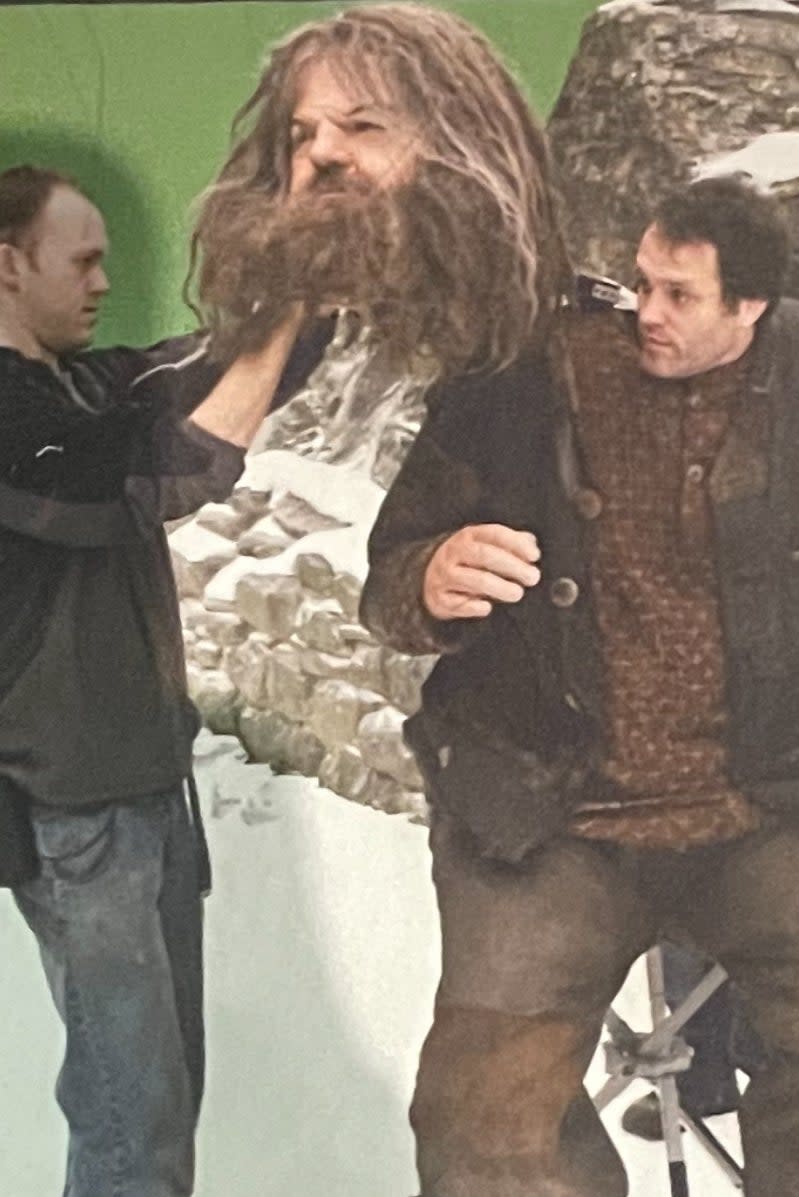
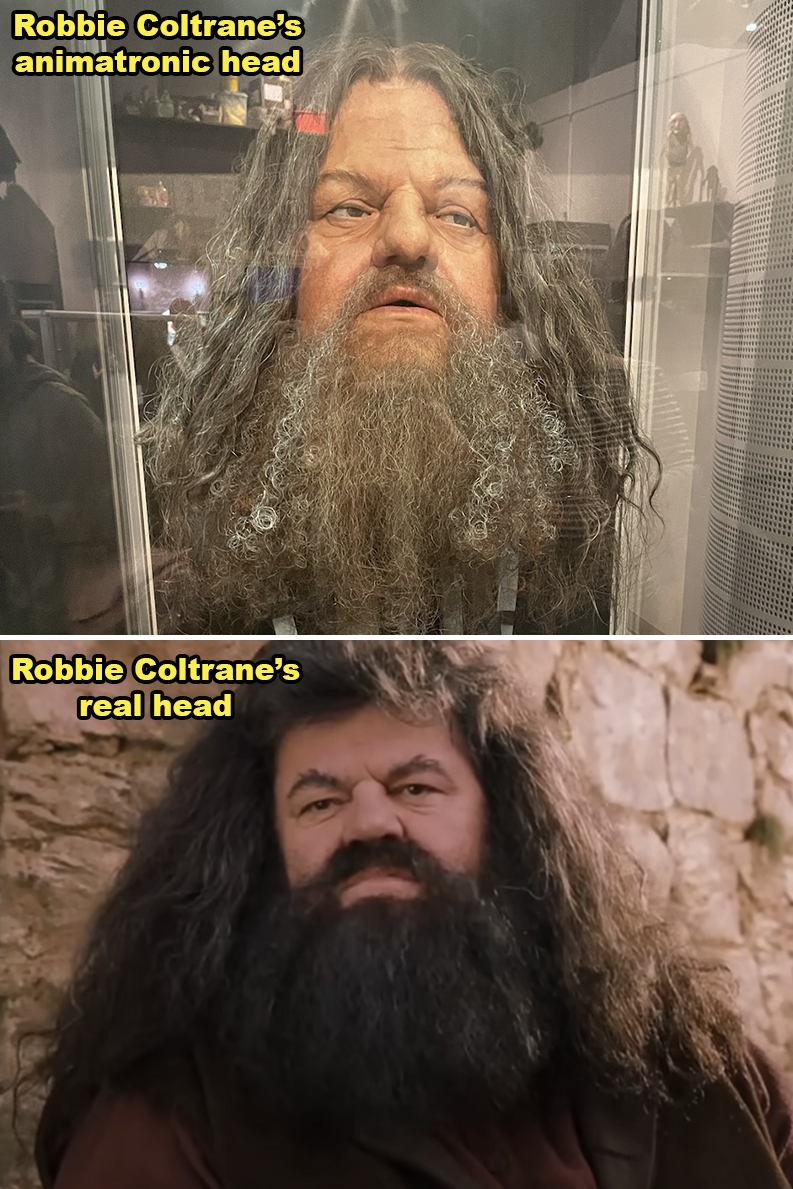
Warner Bros. / youtube.com, Spencer Althouse / Warner Bros.
Martin Bayfield, his stunt double, wore an enormous body suit that had cold water pumping through it at all times so he wouldn't get overheated. They also built large chairs for him to sit on between takes because the suit was so heavy and he was wearing stilts.
4.In order to make Harry Potter's Patronus glow, the Visual Effects team developed an LED vest that was placed on a Scottish Deerhound. Here, the dog could move freely, and the Visual Effects team could see how Harry's Patronus (a stag) would naturally move while glowing. They then combined visual and digital effects to create the right – and believable – lighting effect for the movie.
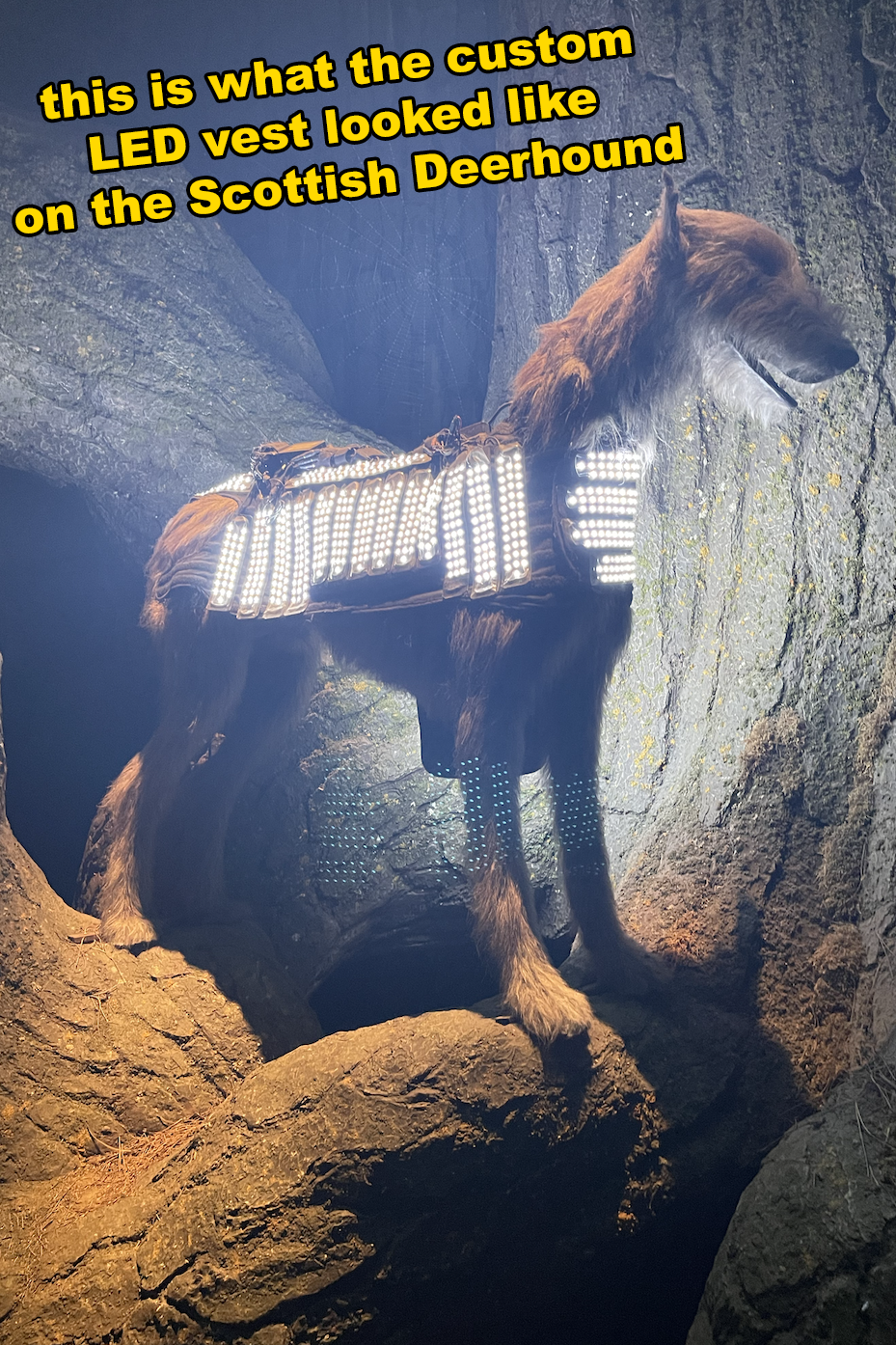
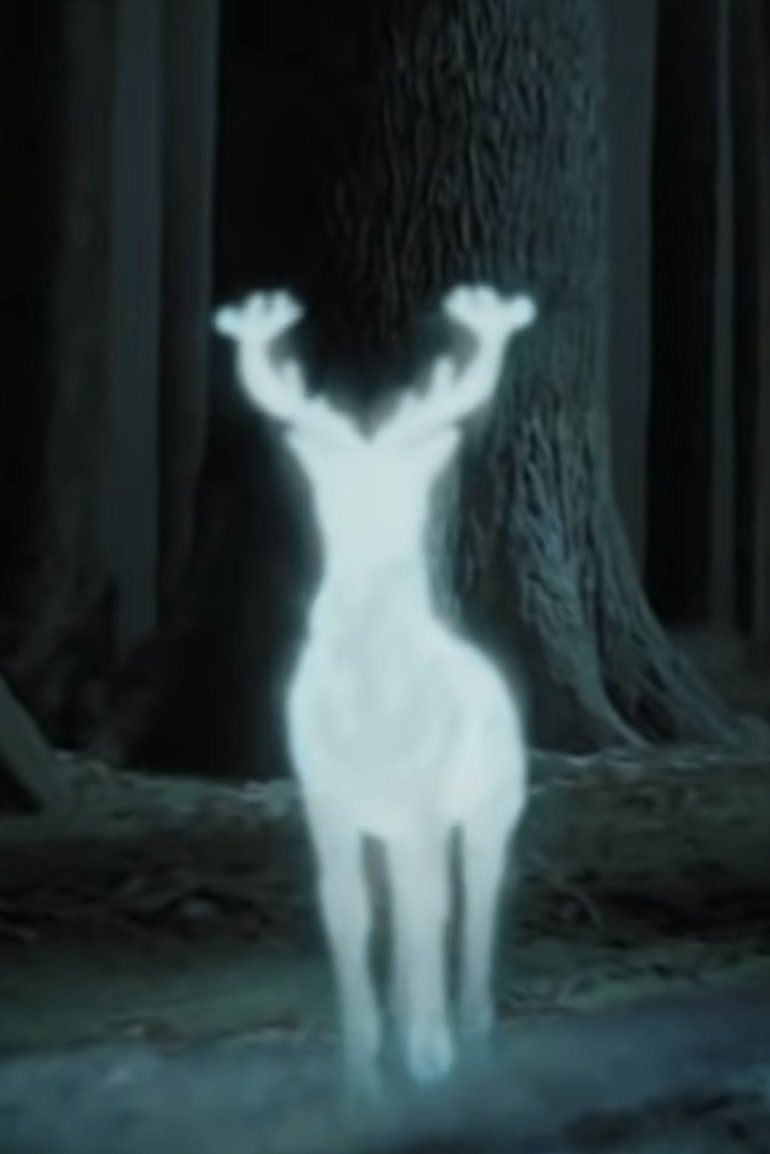
Spencer Althouse, Warner Bros.
5.It's kind of ridiculous to believe, but only 20 makeup artists and hairdressers were responsible for handling over 800 cast members on set each day. Also, only about 50 "costumers" (i.e. those in the costume department) worked on each movie, and they were responsible for designing and making everything from the Hogwarts robes, to each character's glasses or jewelry, to picking out Professor Umbridge's tiny brooches.
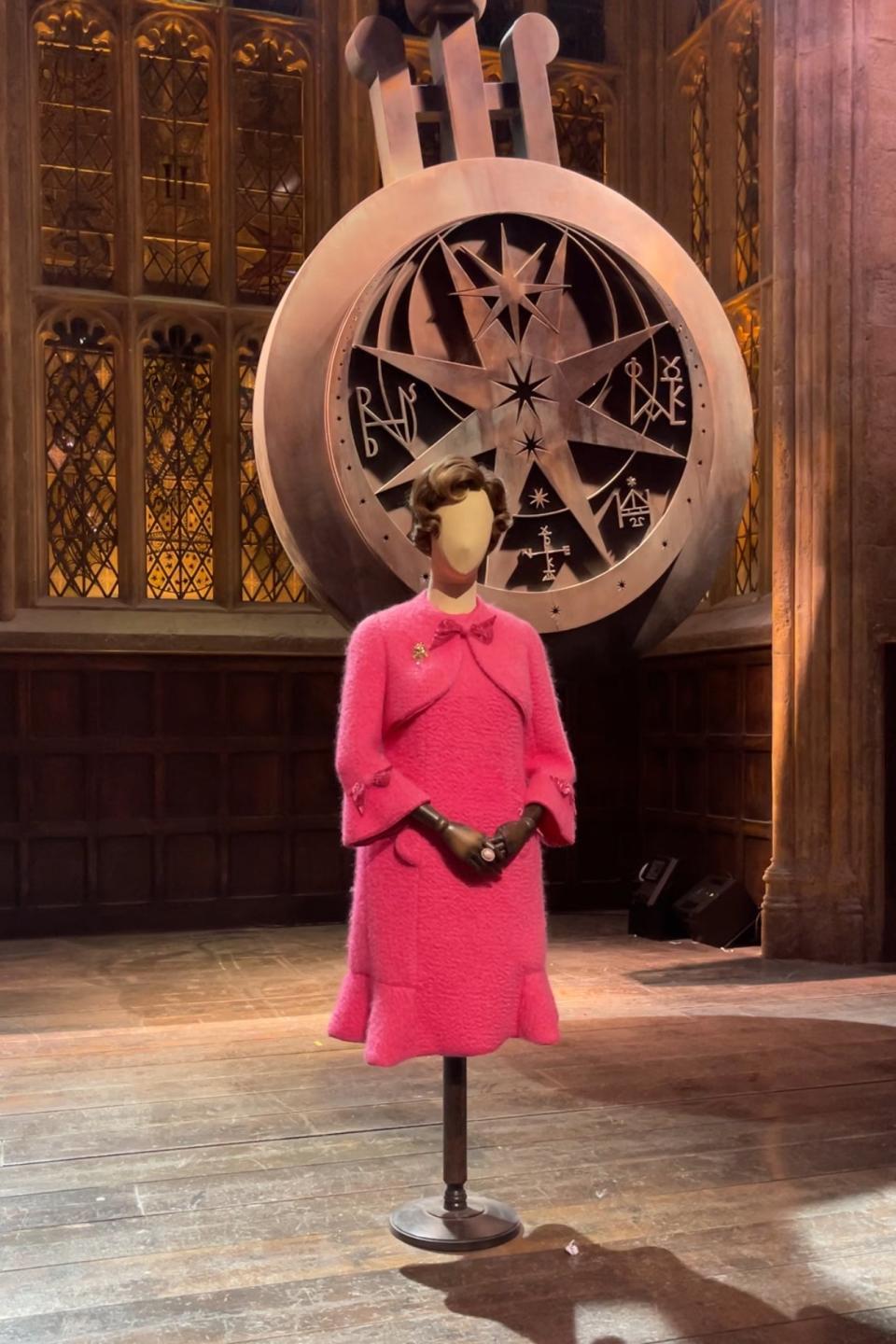
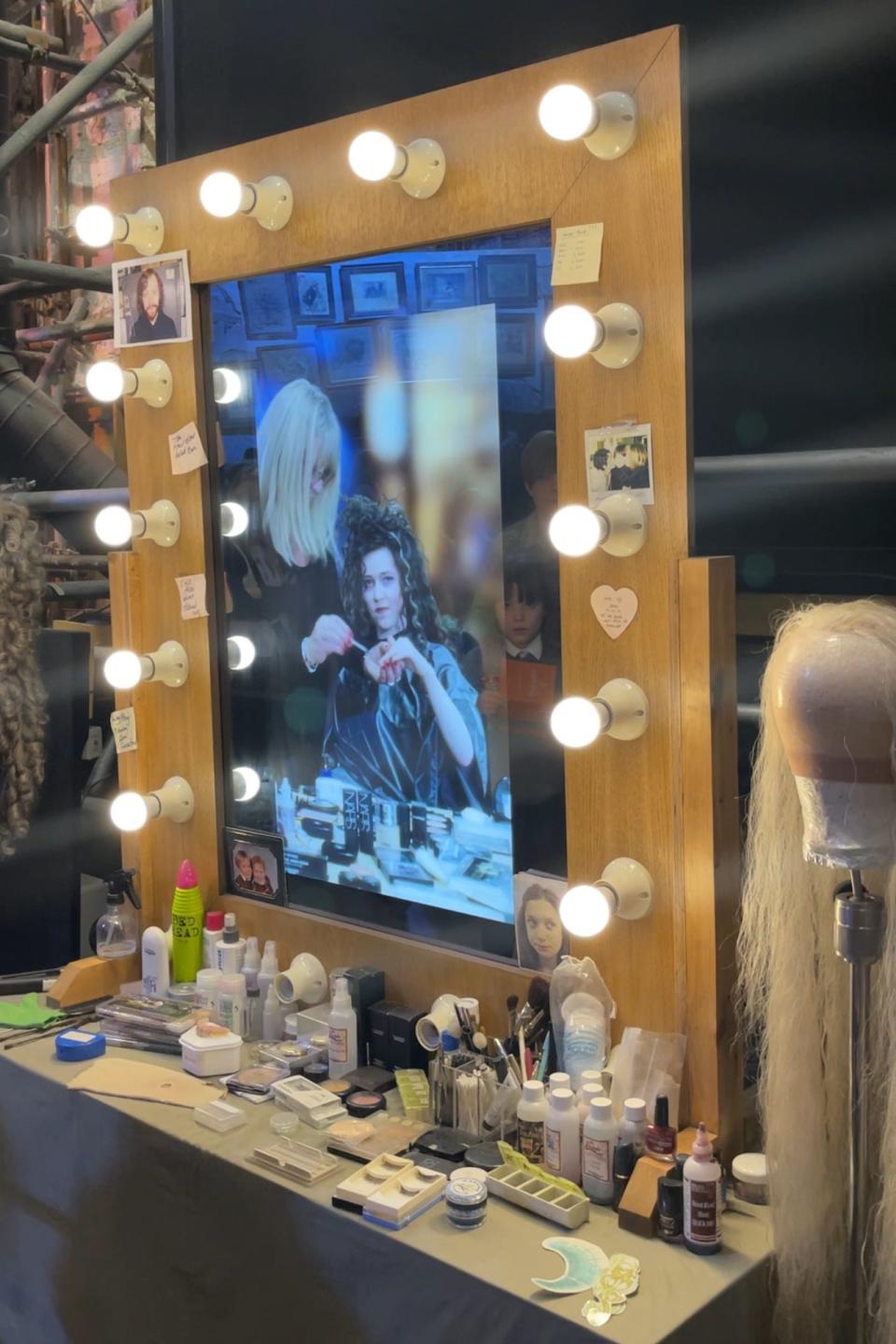
Spencer Althouse
6.And speaking of Professor Umbridge, her outfits would get more pink as her character would acquire more power. Basically, the more evil and stronger she got, the darker those pink accents on her and her workers' costumes became.
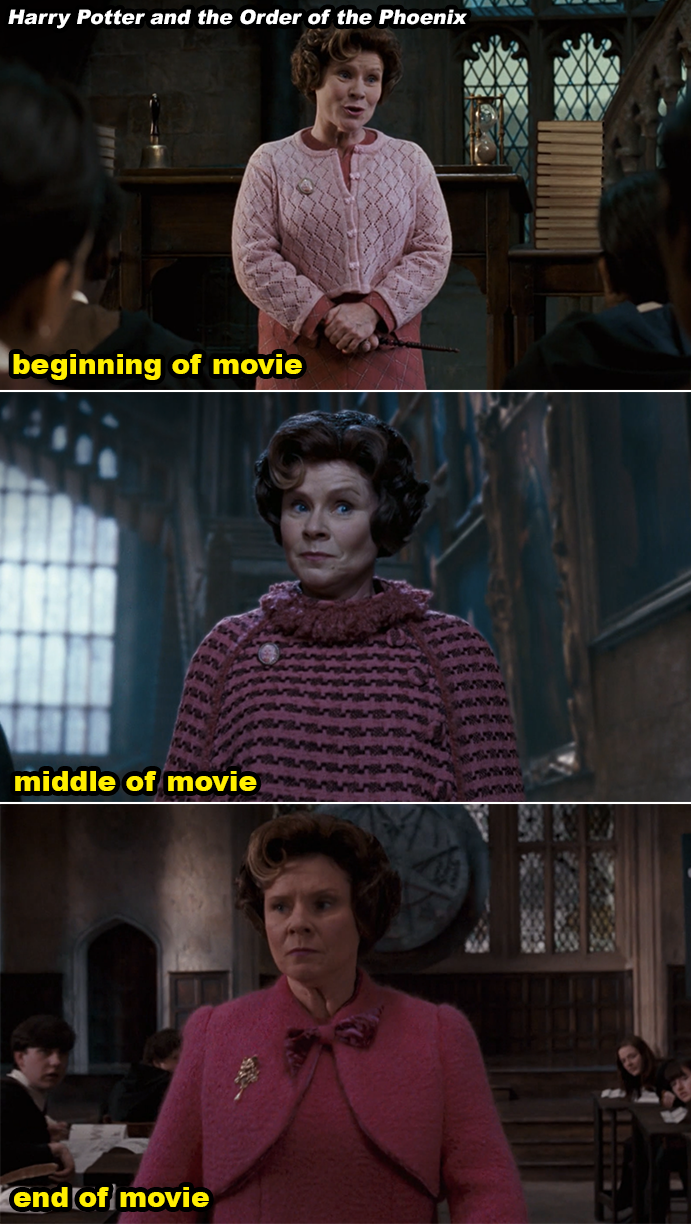
7.Similarly, at the height of Voldemort's power, his robe was made of rich green silks. These tones would get darker, and new layers of silk would be added to his costume as his character grew stronger. However, as each Horcrux was defeated, a layer of silk would be removed, and the outfit would become more faded.
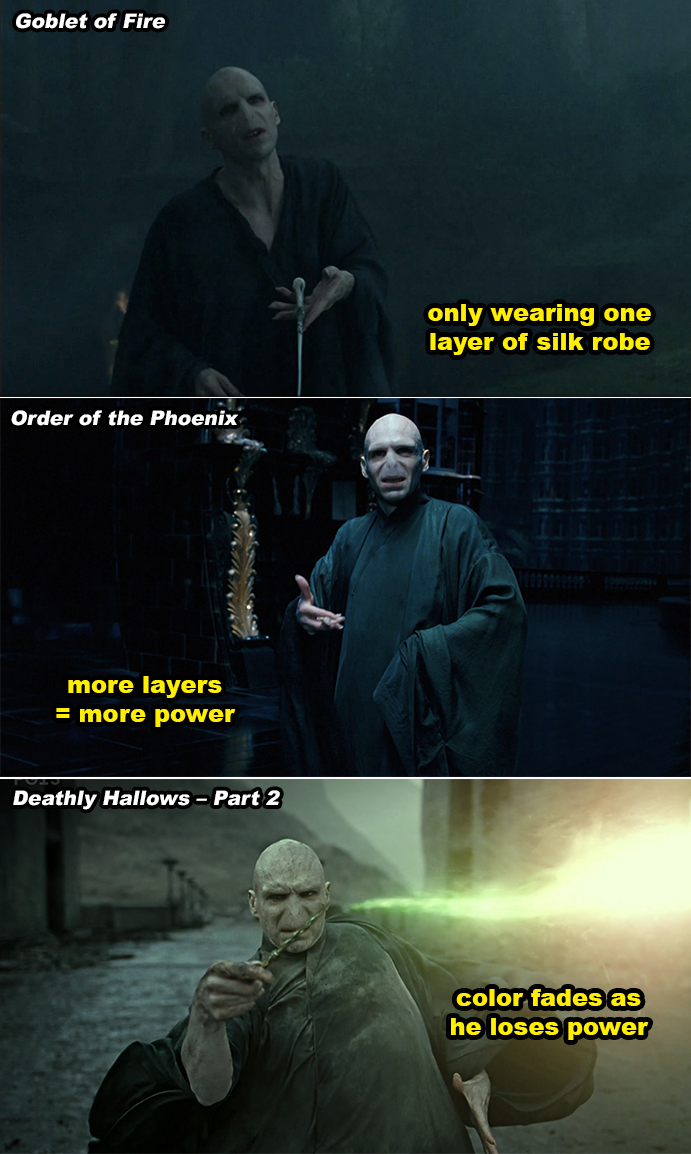
8.Nearly 350 portraits hung throughout Hogwarts, and all of them were painted on blank canvases by only a couple different artists. In fact, many of the portraits are of random crew members who worked behind the scenes. Prisoner of Azkaban director Alfonso Cuarón even had his then-wife and child incorporated into one of them as a tribute.
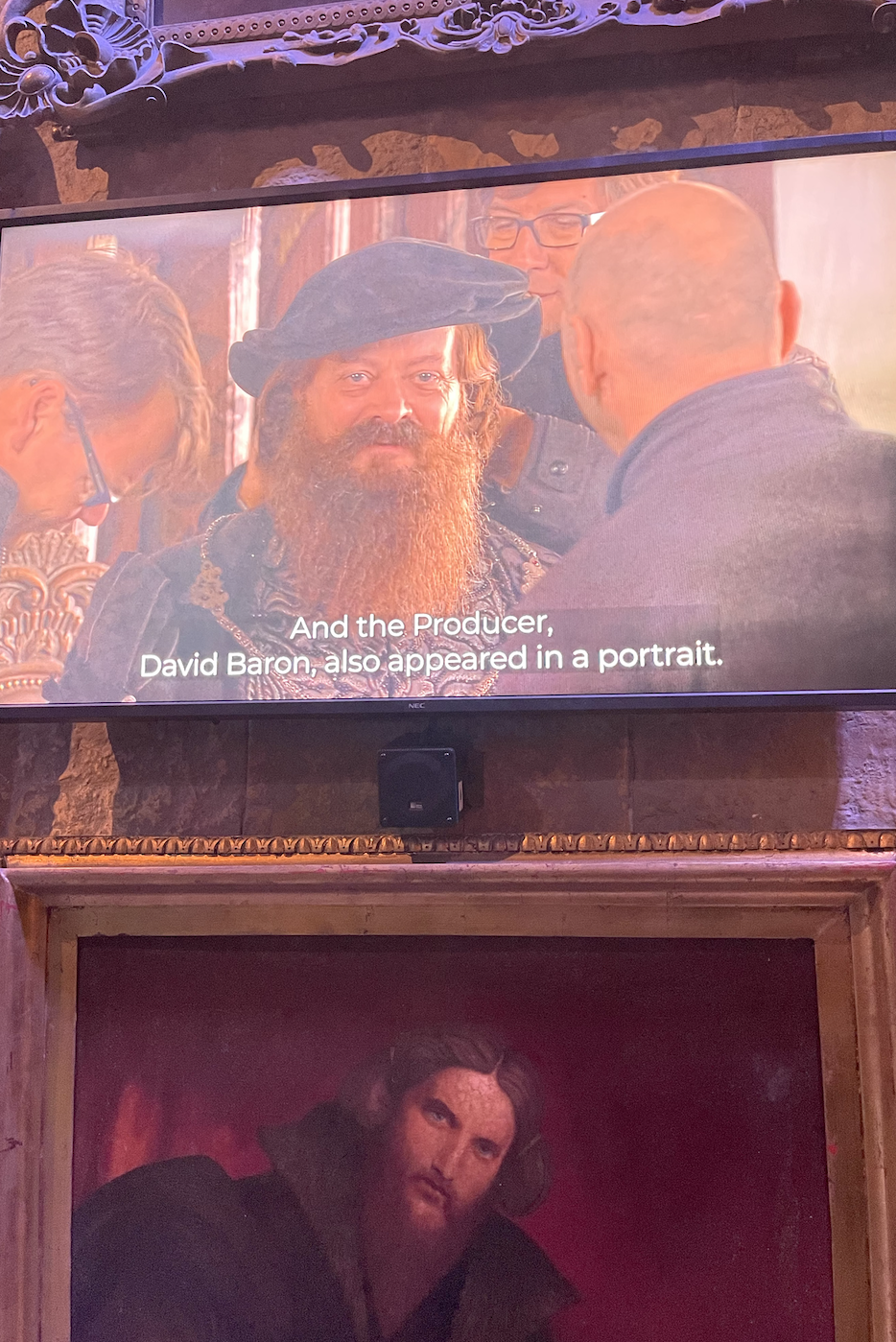
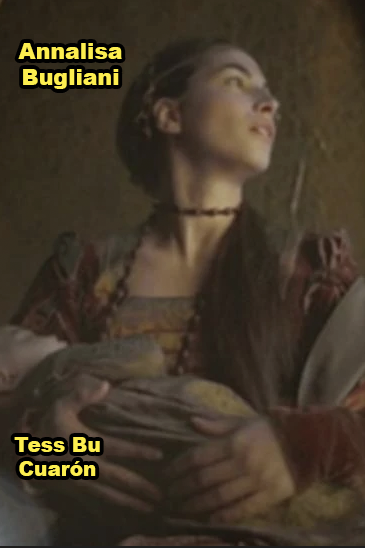
Spencer Althouse, Warner Bros.
9.Over the course of the eight films, over 250 different animals (most of them rescue) were trained to appear on screen. Ravens were apparently the easiest animals to work with because they could be taught in a single day, but owls were the most difficult to train.
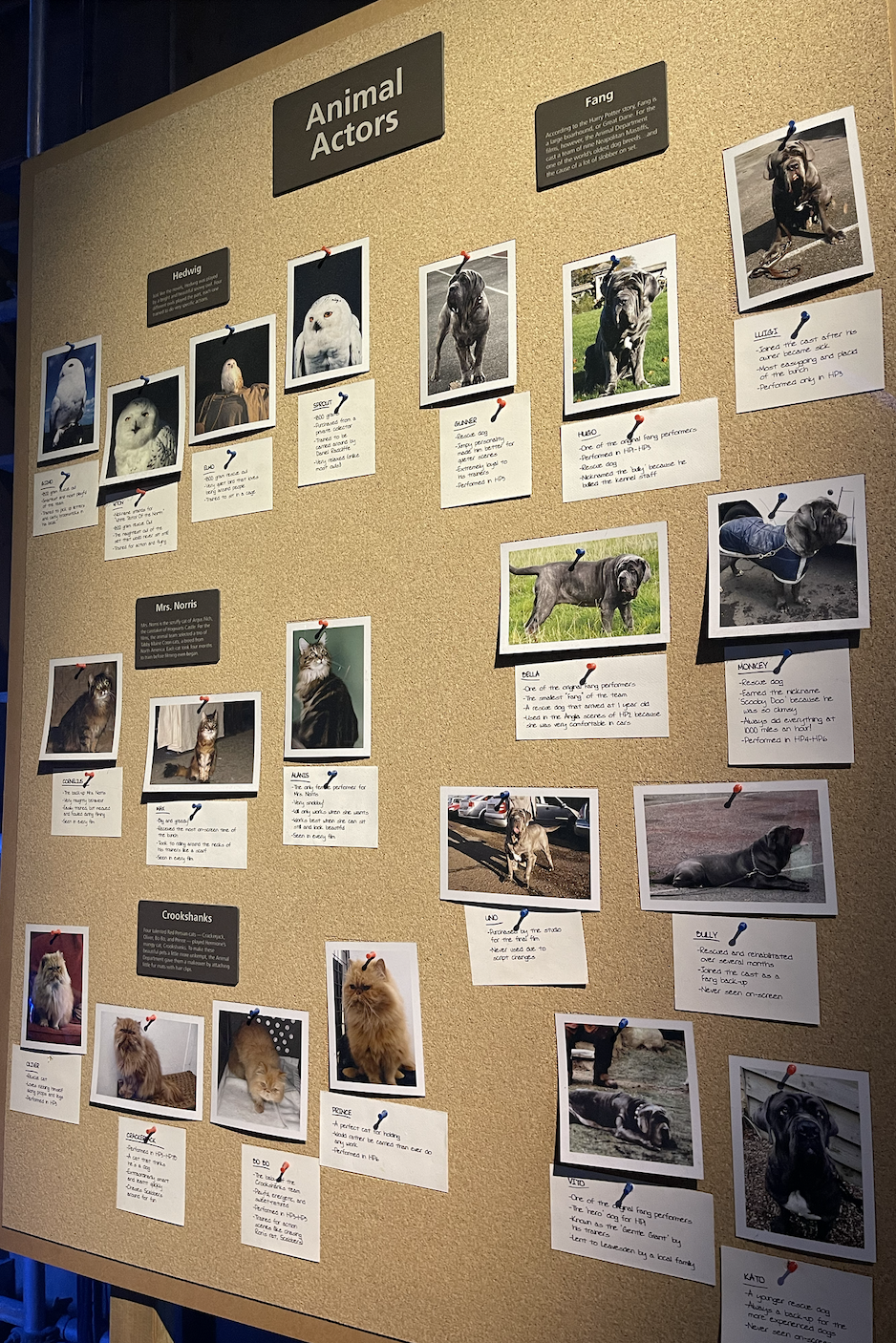
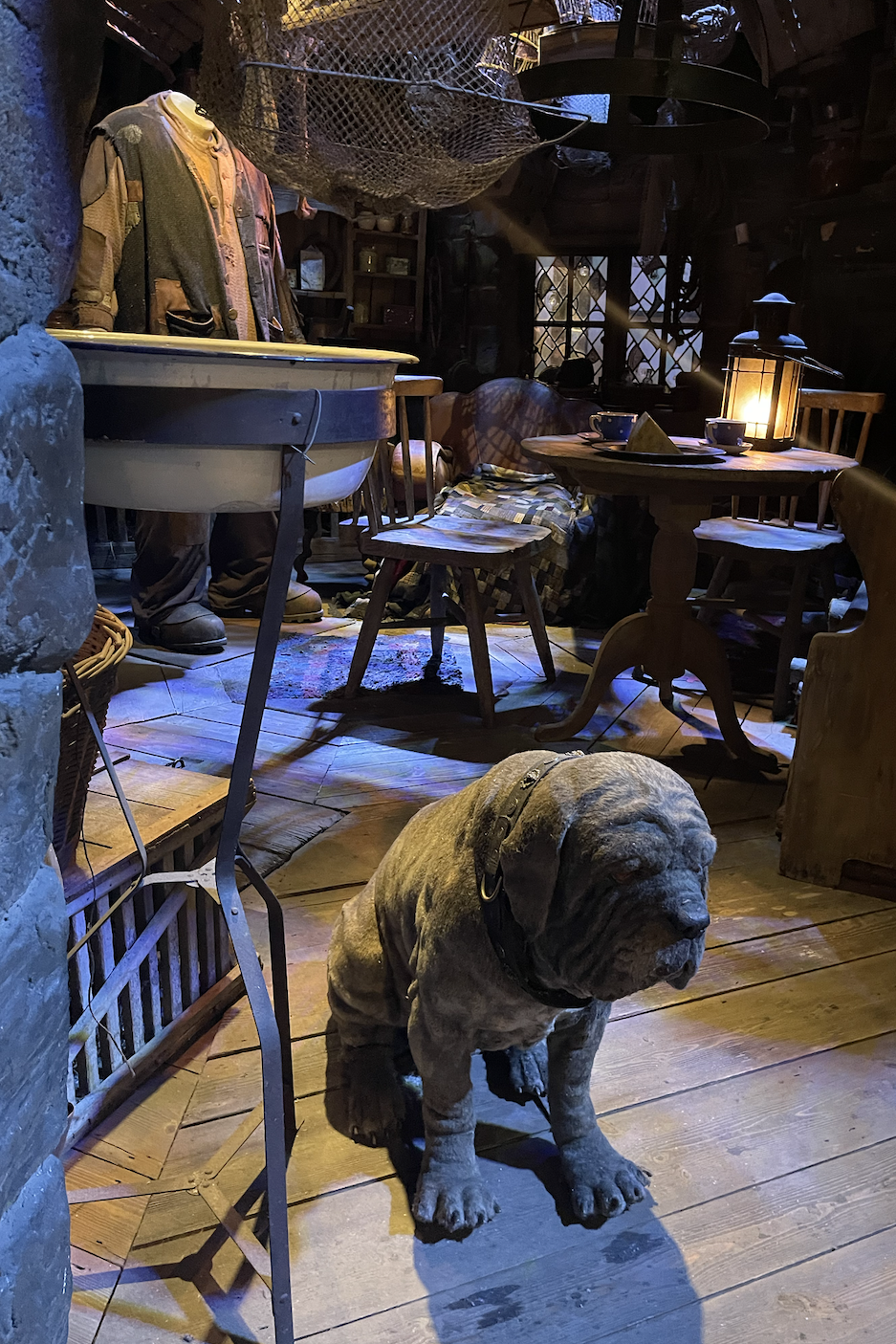
Spencer Althouse
Julie Tottman, who worked as Head Animal Trainer on the movies, said her favorite animal to work with was Fang, Hagrid's oversized dog.
10.While shooting the first movie, all of the "floating candles" in the Great Hall were originally hung from the ceiling by wires. However, the flames started burning through the wires, and they came crashing to the ground. For safety reasons, most of the candles were ultimately replaced with digital effects instead.
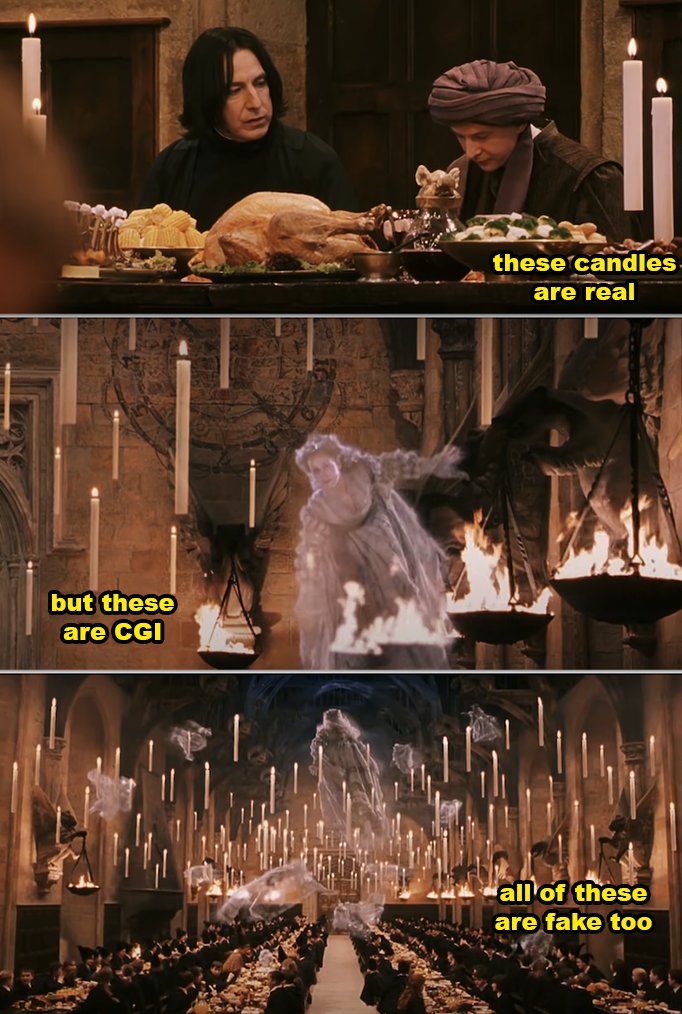
The original floating candles obviously weren't real – they were just made to look like candles. Instead, they were tubes that were full of oil and topped with a wick. Each one was attached to a wire on a rig, and the wires were meant to be CGI'd out of the final shots.
11.Several invisibility cloaks were made for the movies, and each one was crafted from a special velvet fabric that had Celtic symbols printed on it. In order to make Harry turn invisible, one of the cloaks had a green fabric lining that allowed the Visual Effects team to make it disappear via CGI.
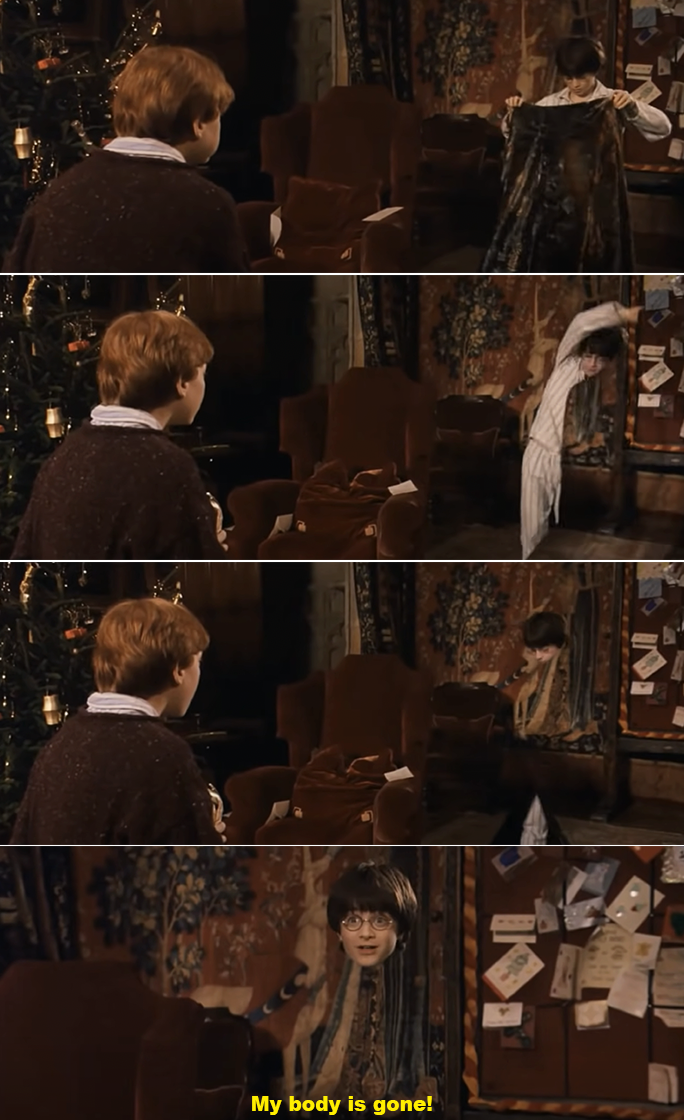
12.Exactly 538 individual sets were created throughout the filming of all eight movies. The Gryffindor Common Room, for example, took about three months to build (nearly the same amount of time it took to build the Great Hall) because of how detailed it is. It's one of the longest-standing sets from the entire series.
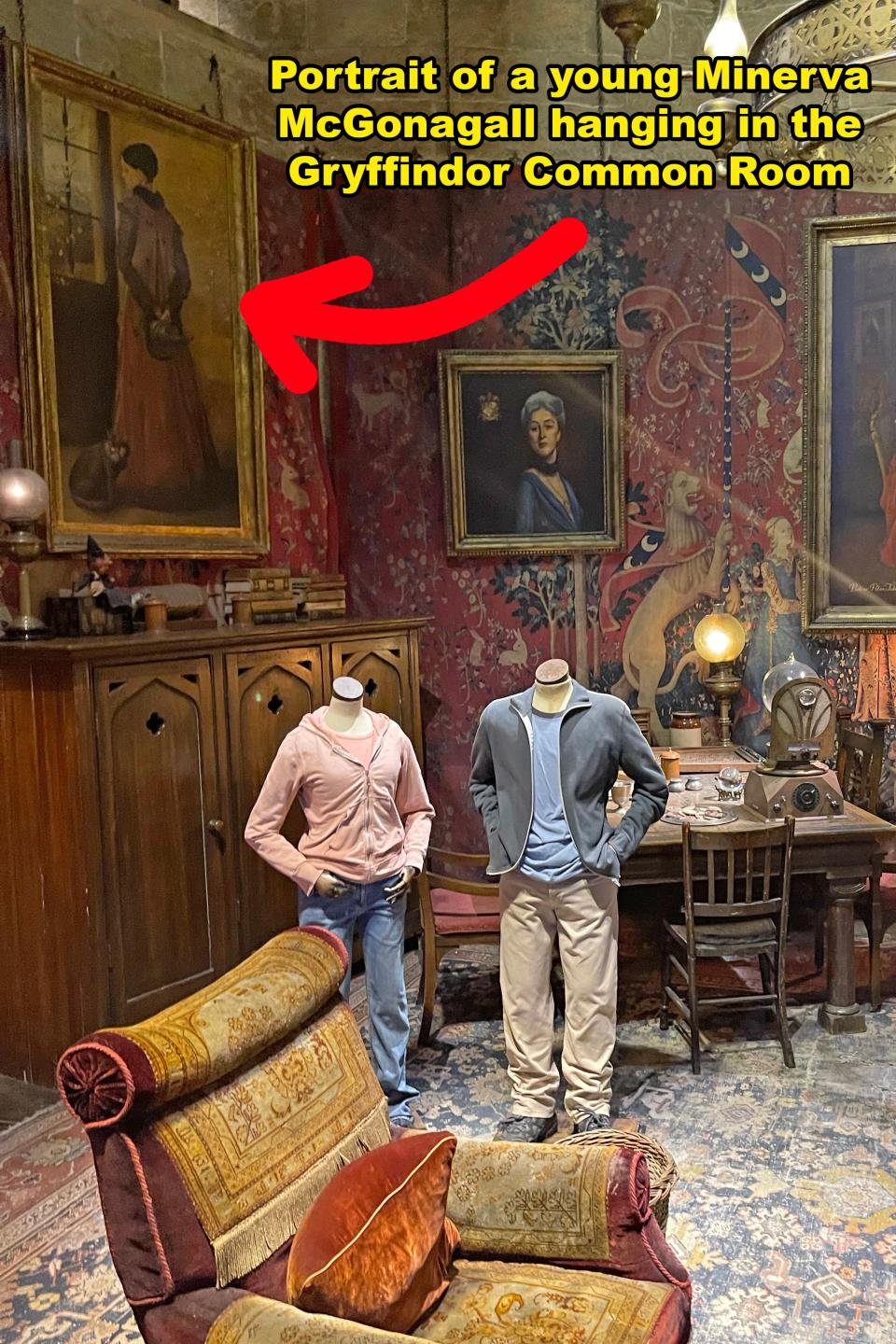

Spencer Althouse
13.The Griffin Stairwell (aka the magical spiral staircase that leads to Dumbledore's office) was one of the most challenging props for the Special Effects Department to build. They actually built two versions: one static model in my pic below, and a second that actually moved in real life. To make it a functional, moving staircase, they built it in a 12-foot hole in the ground and used mechanics so it would spiral upwards.
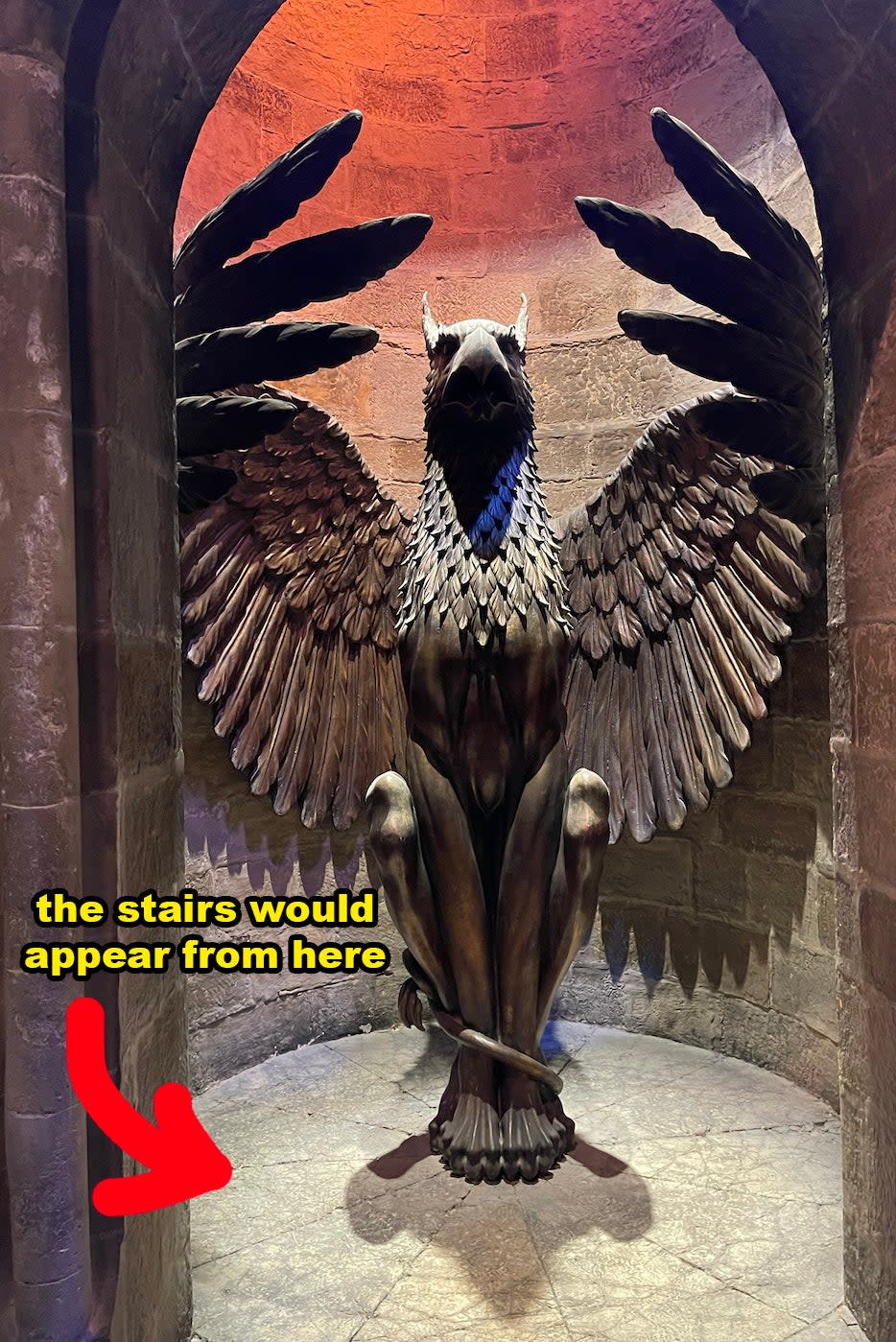
Spencer Althouse, Warner Bros.
14.One of the Prop Manufacturing Department's favorite pieces to craft was the Triwizard Cup. Their goal was to make it look like an "ever-evolving, organic crystal, as though it magically had a life of its own." On the trophy are three dragons, which represent the three different schools that compete in the tournament: Hogwarts, Durmstrang, and Beauxbatons.
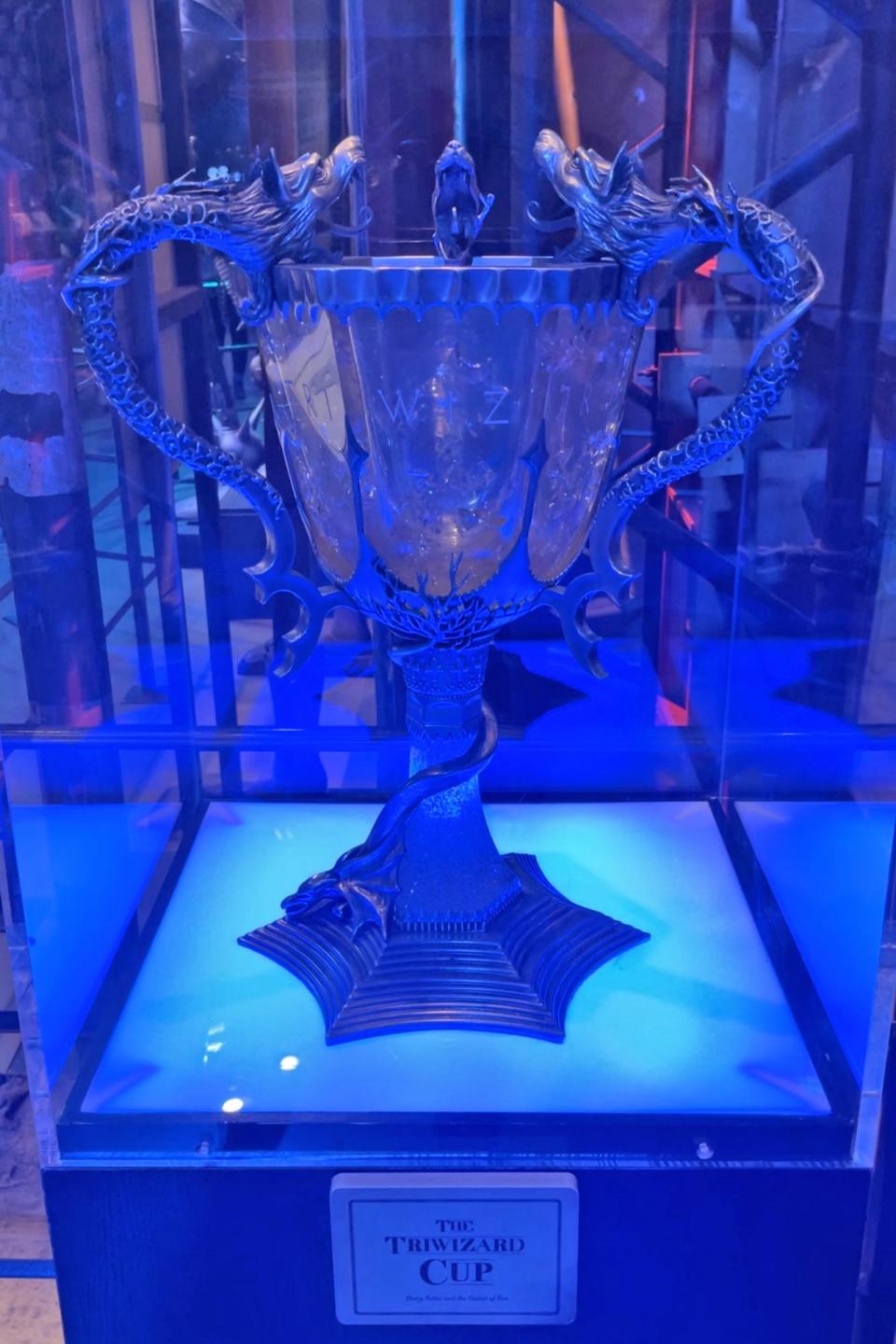
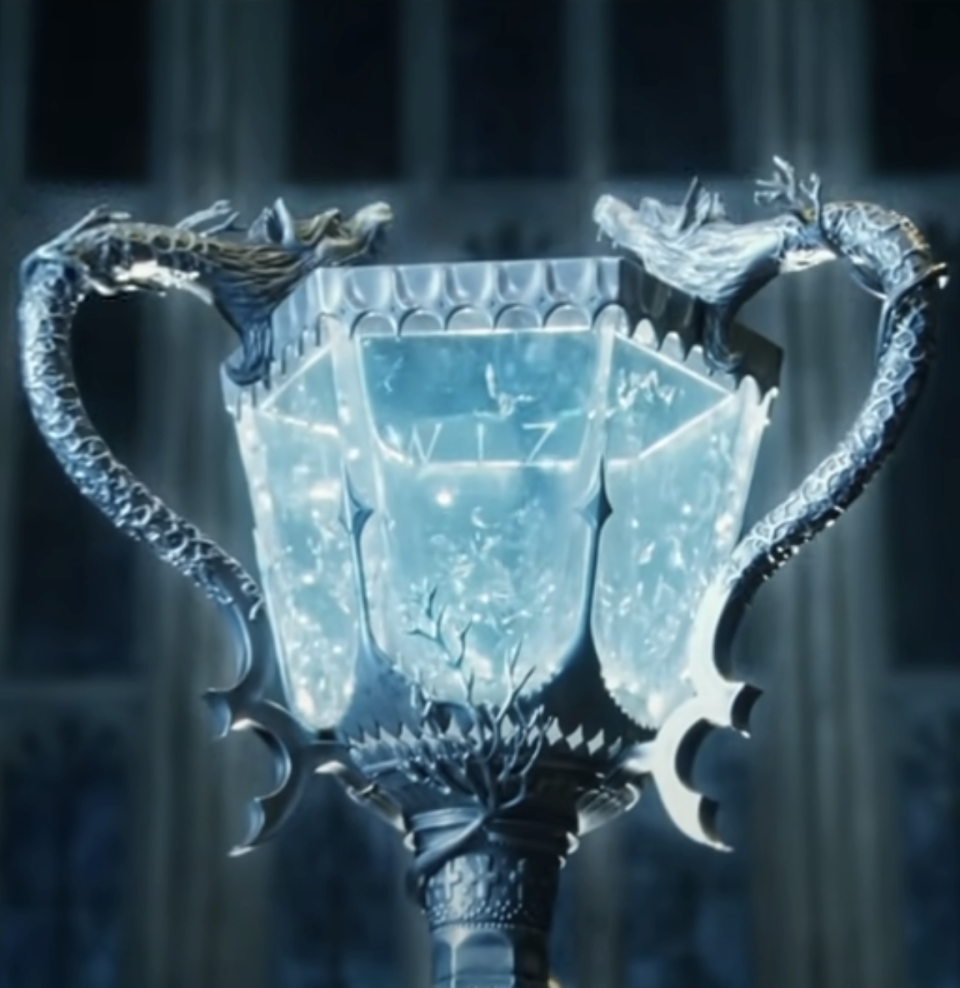
Spencer Althouse, Warner Bros.
15.The Special Effects Department consulted an actual magician to help figure out creative and "invisible" ways to open and close Marauder's Map. For example, it was the magician's idea to use a hidden thread to sneakily unfold the map. That, coupled with some visual effects in post-production, resulted in the final product that we see in the films.
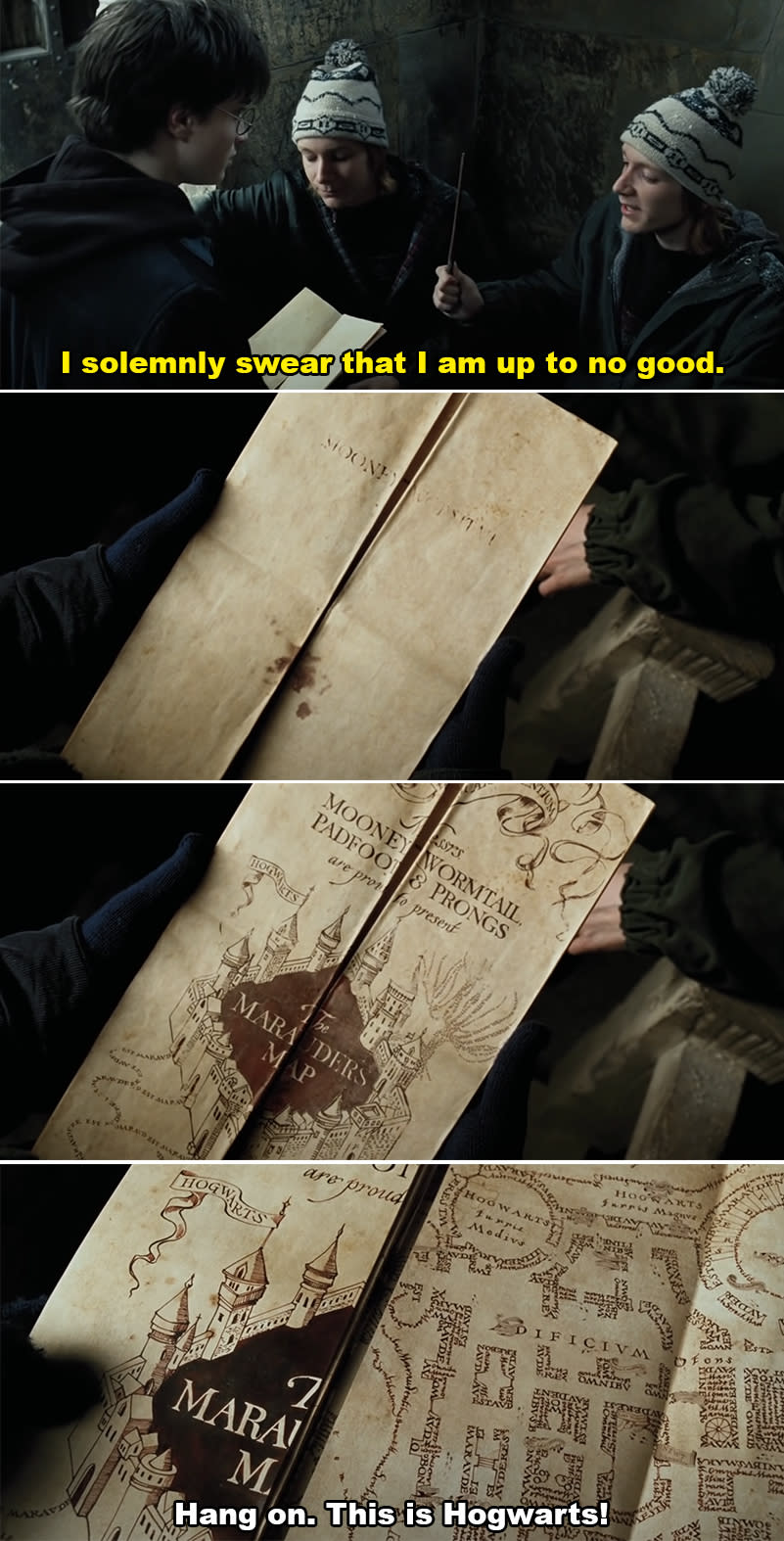
16.Harry's first broomstick was obviously the Nimbus 2000, but it almost looked completely different. The Props Department went through 25 different iterations before settling on the final version.
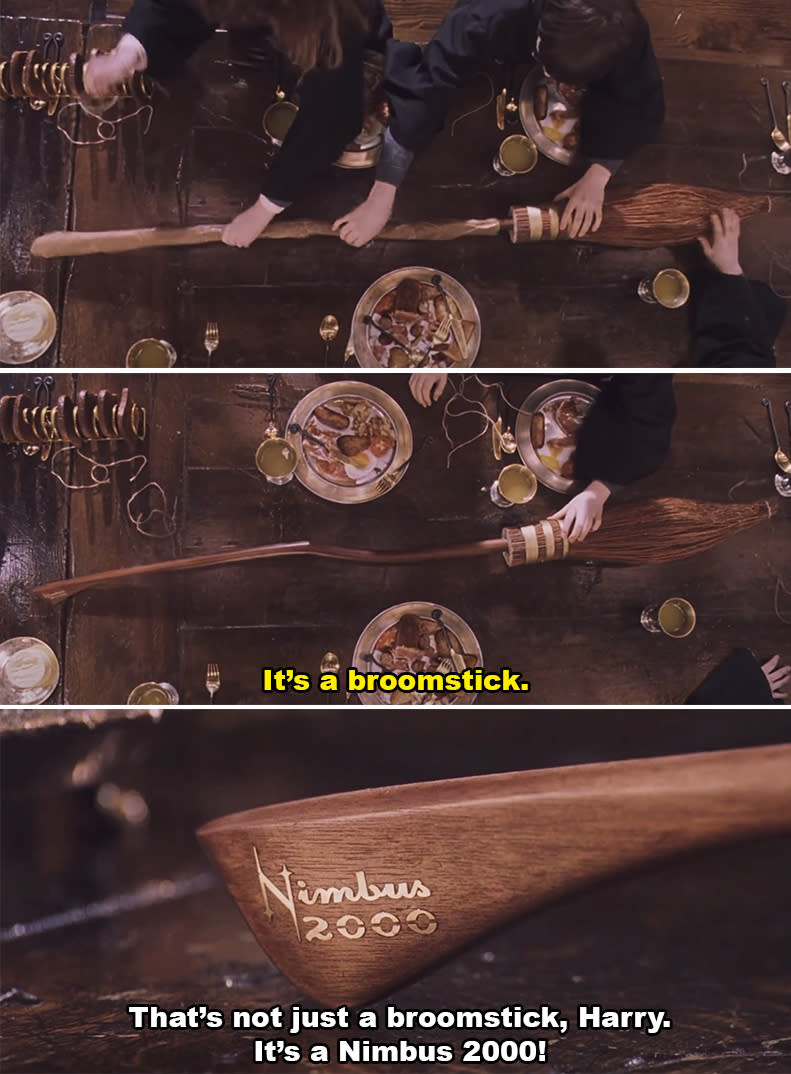
17.The Gringotts vault cart took three months to build, and by the time they started filming, it was able to move up to 15 mph on a specialty track. However, they used both special ~and~ visual effects for the final product. Each actor had a stunt double, and everything was filmed in front of a green screen so the background could be fitted with the computer-generated set.
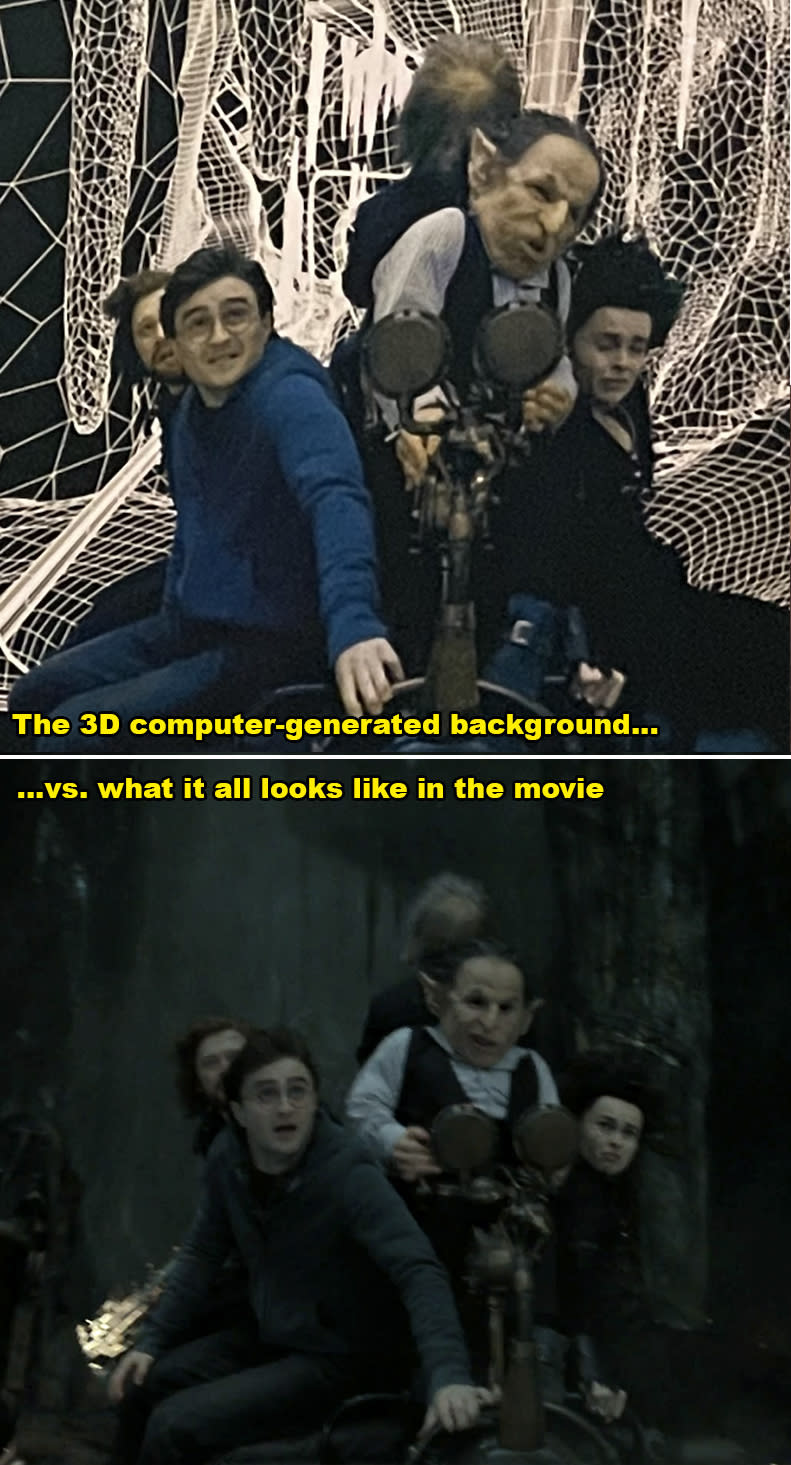
18.In the beginning of Chamber of Secrets, the "cake" that fell on Mrs. Mason's head wasn't actually real. It was made of a lightweight fiberglass and was suspended in the air via a mechanical rig, to look like it was floating. Then, when it came time for Dobby to do the deed, a trap door was released and dropped the actual cake onto her.
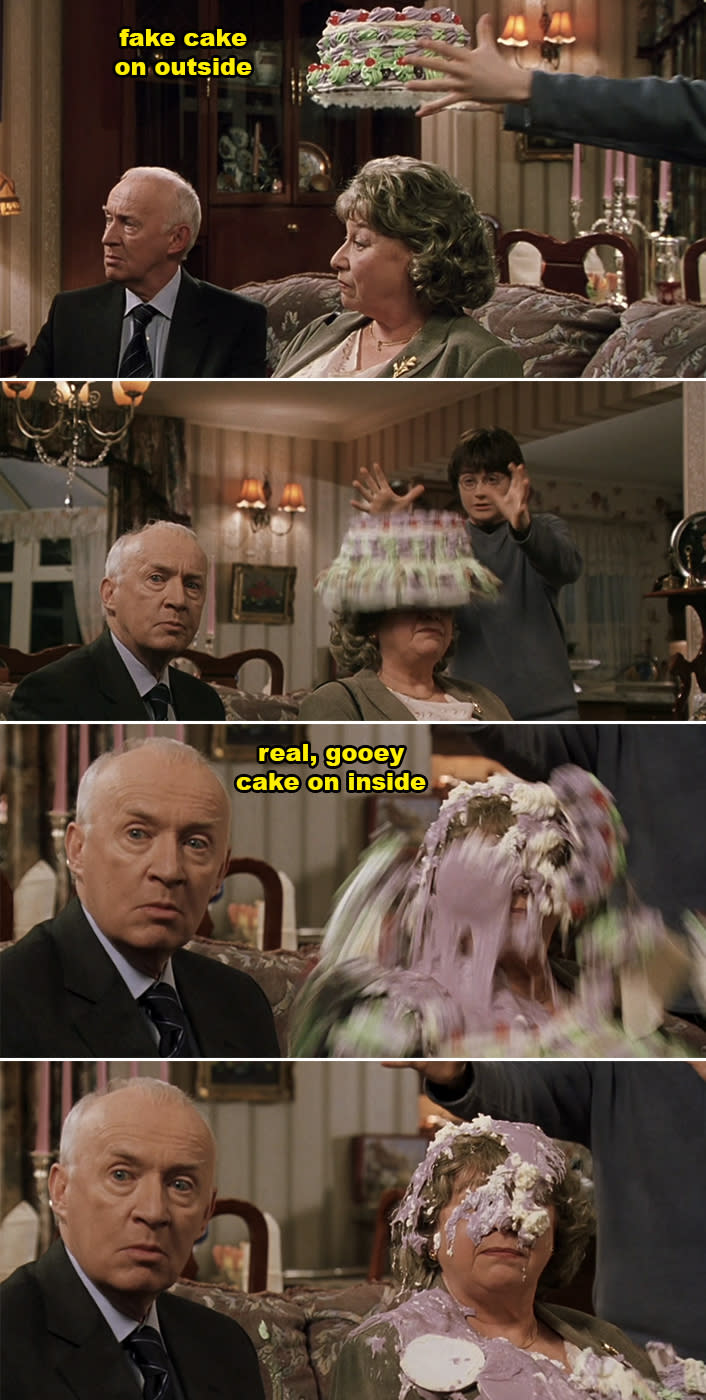
19.The Weasley's home (aka "The Burrow") was the largest set that was built throughout the entire series, coming in at just over 44 feet. A second model of the house was also built a few years later, this time so they could set it on fire while filming Half-Blood Prince.
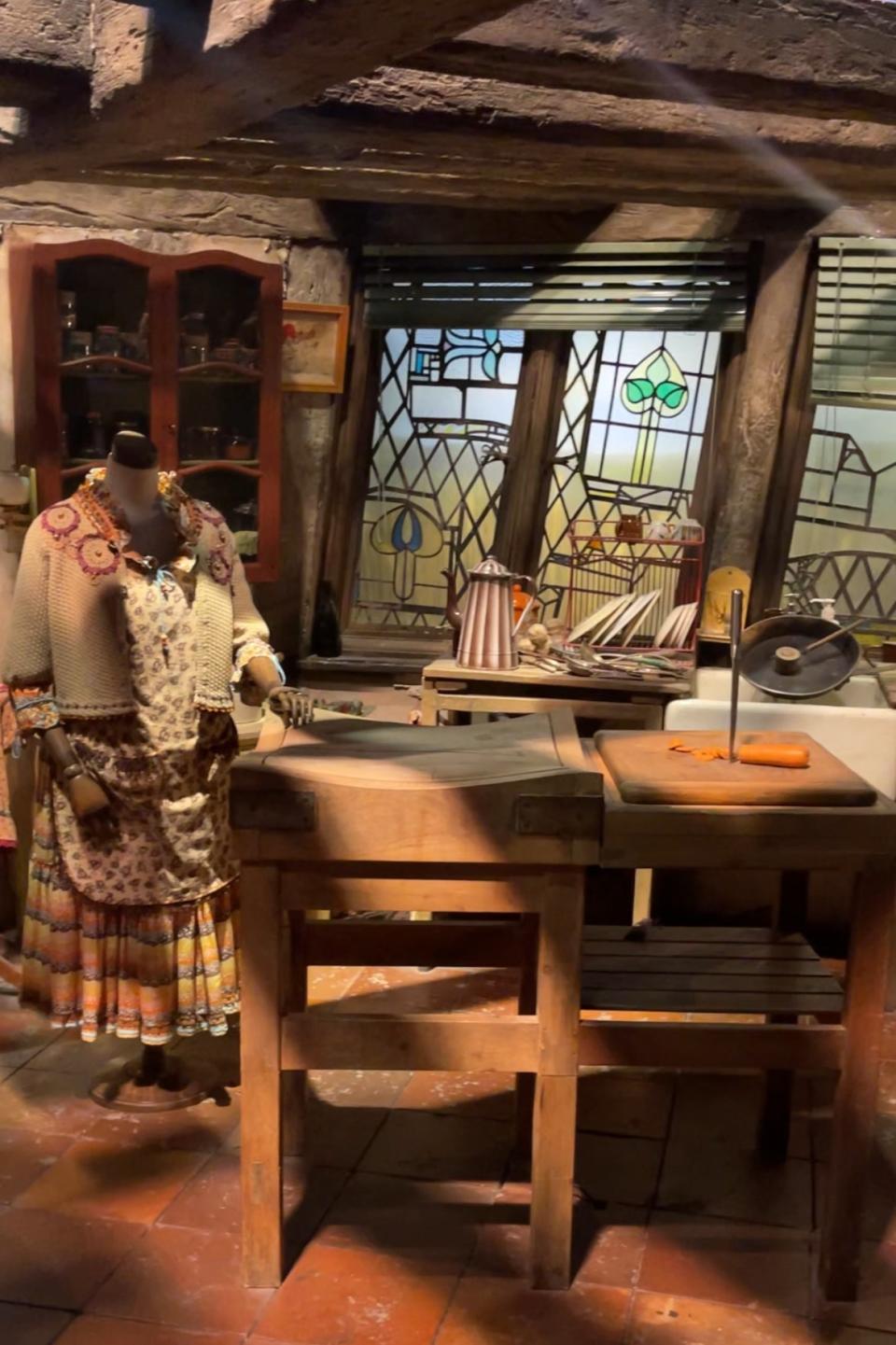
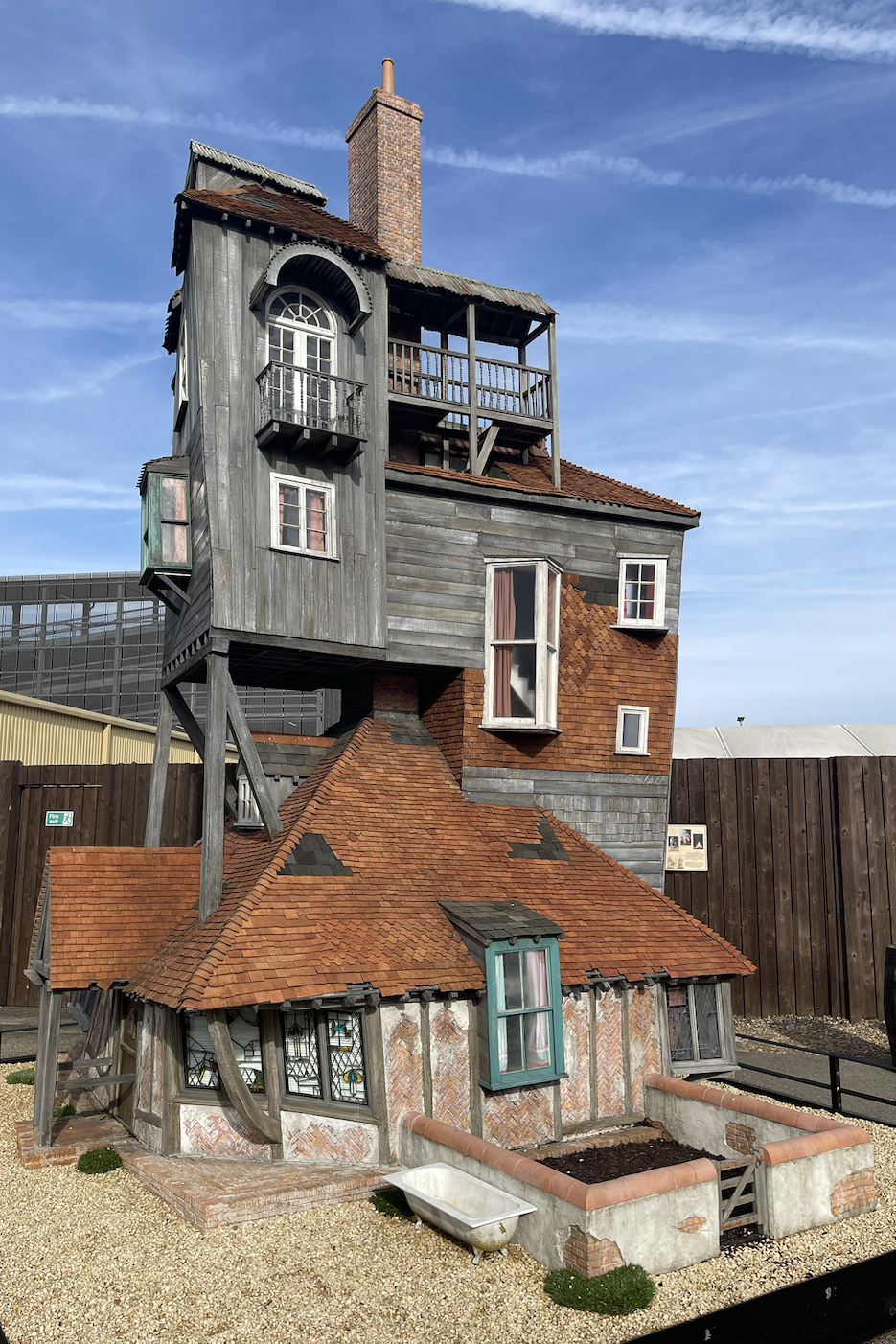
Spencer Althouse
According to the Art Department, the Weasley's house was designed to look like Mr. Weasley had built it himself, so they "pushed and pulled support beams and wall units out of place with chains after the set was constructed" to give it that awry look.
20.Seventeen giant fireplaces were built to help create the set for the Ministry of Magic, and each one was just over 30 feet tall. Visual effects were then used to make the space feel even larger.
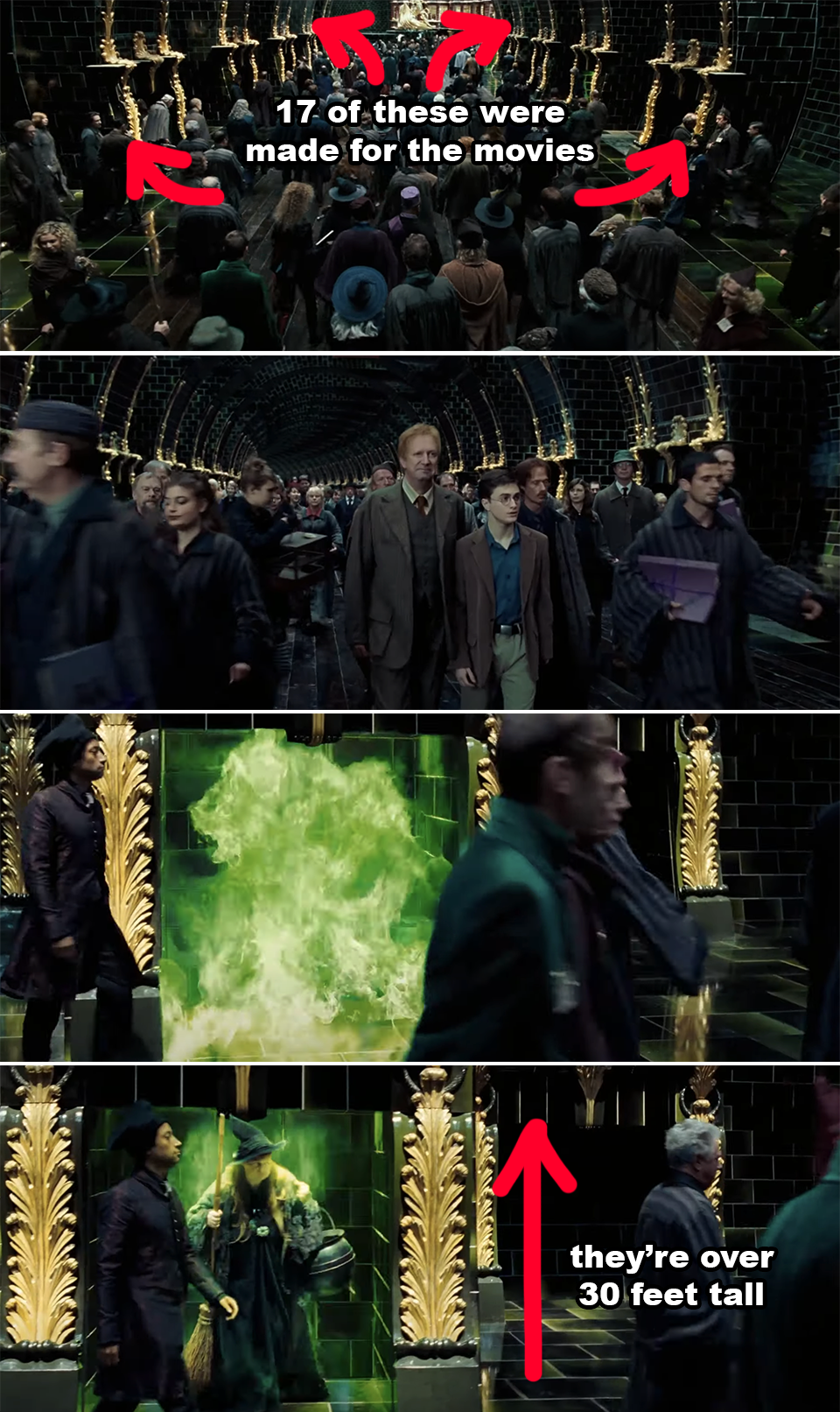
In Order of the Phoenix, when Harry first traveled to the Ministry of Magic with Mr. Weasley, a bunch of those extras walking around were actually random crewmembers from the set. They all went through hair, makeup, and costuming to become witches and wizards for a day.
21.Hundreds of different plates were used for Professor Umbridge's decorative kitten plate collection. They were all hand-painted green so the Visual Effects team could CGI cat footage onto them (and, yes, it was actually someone's job to film all of those cats so they had enough footage in the first place).

22.The Forbidden Forest was shot on location at a park in the first movie, but for all the other films they actually built a new set on the backlot and soundstages. Here, they hand-painted the backdrops (some as long as 600 feet) instead of just digitally creating them, and they also used real tree trunks to help carve out the forest.
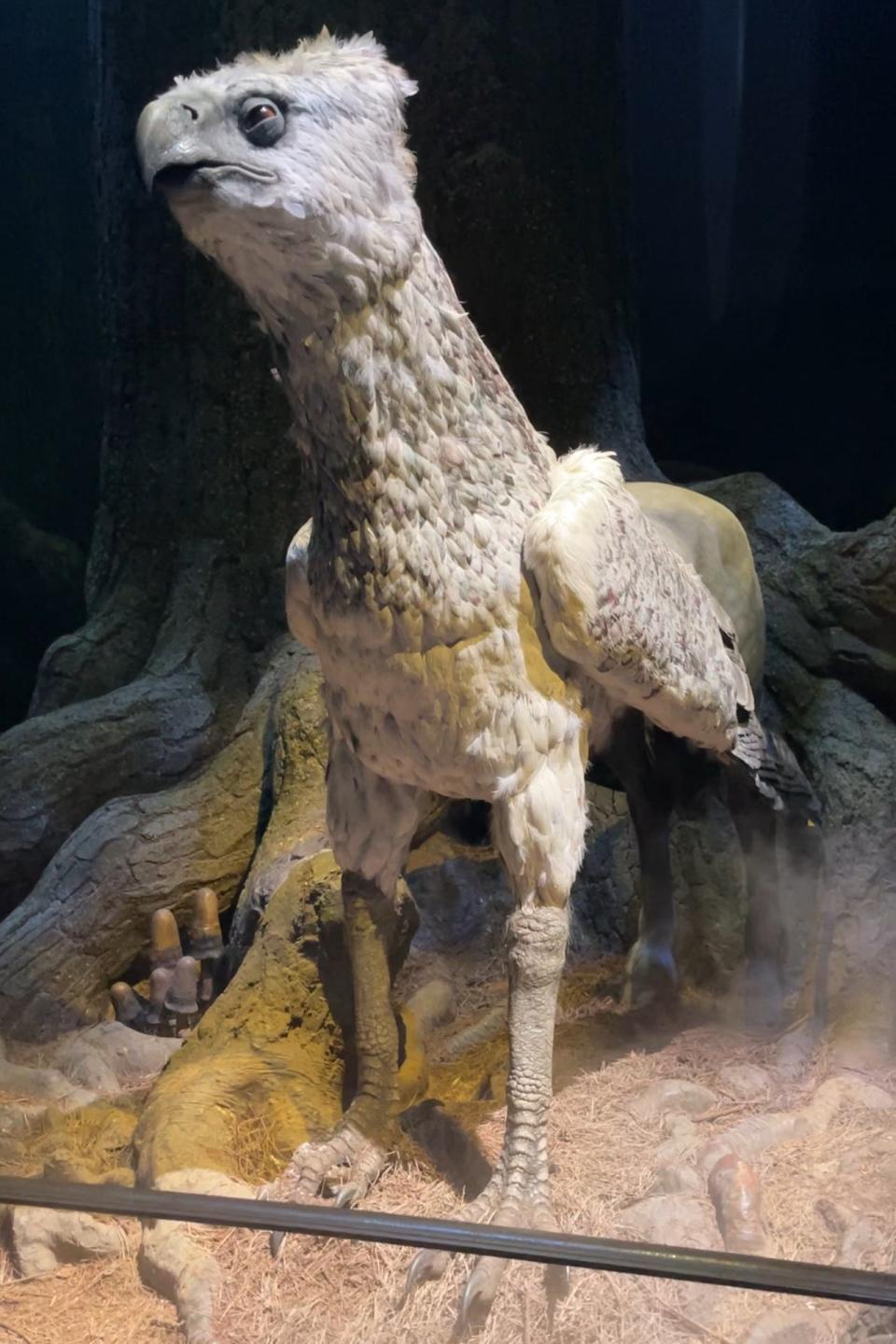
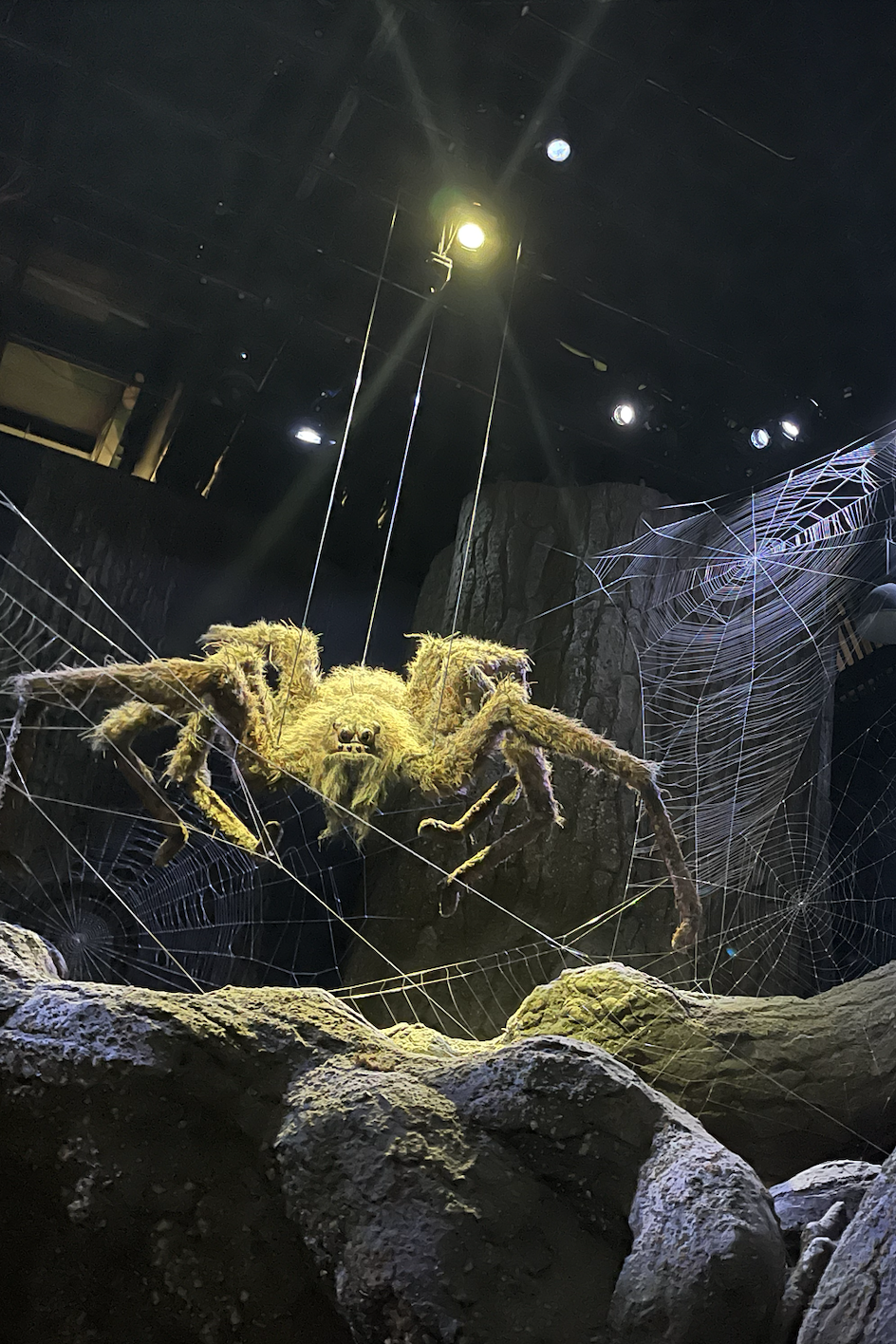
Spencer Althouse
23.In terms of the makeup effects, there was a whole category of workers in the "Creature Shop" who were responsible for turning the cast into werewolves, trolls, and everything in between. Basically, each character's look would be sketched out, and then a team of artists would create molds for prosthetics, which could then be applied to each actor.
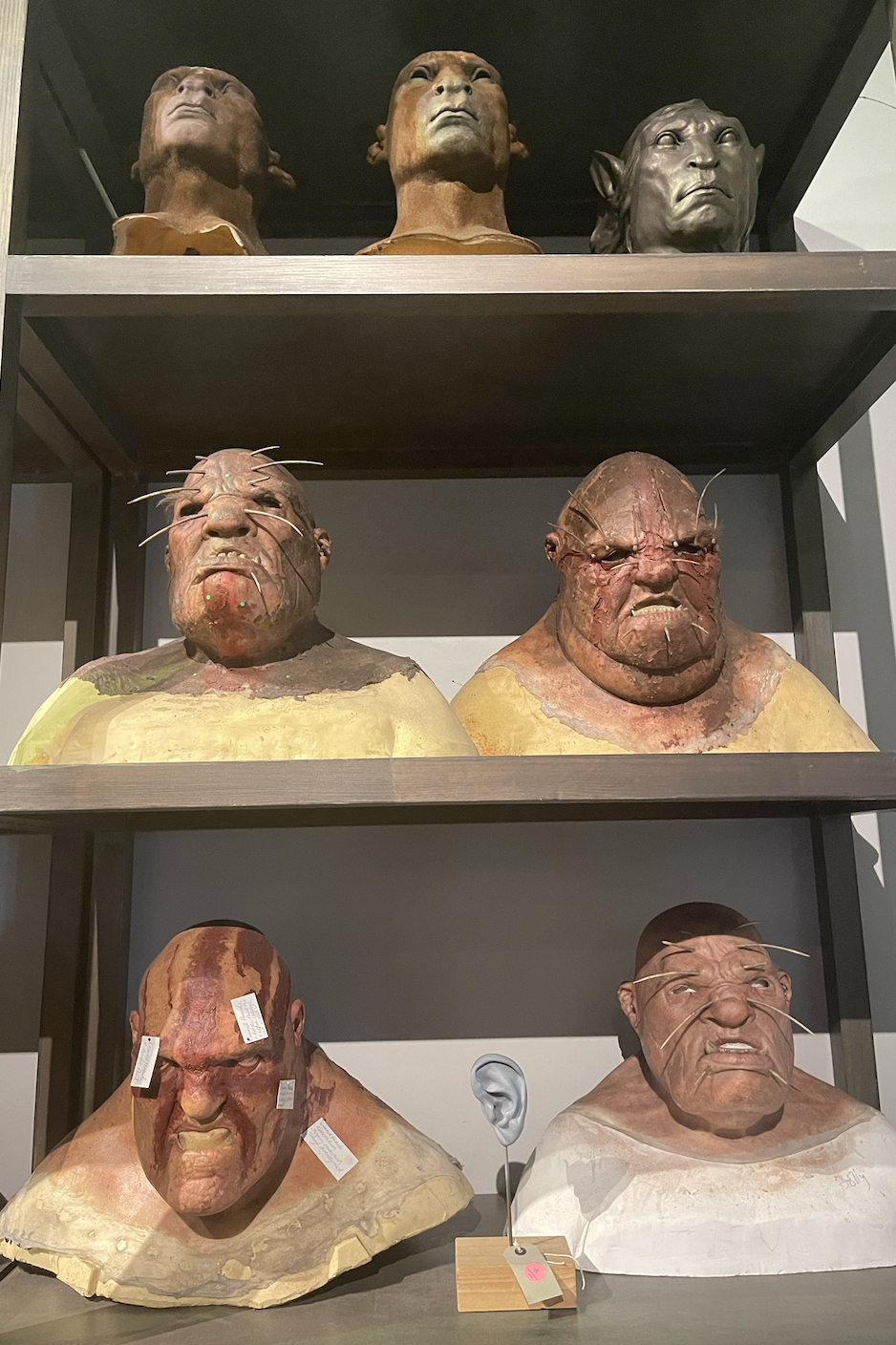
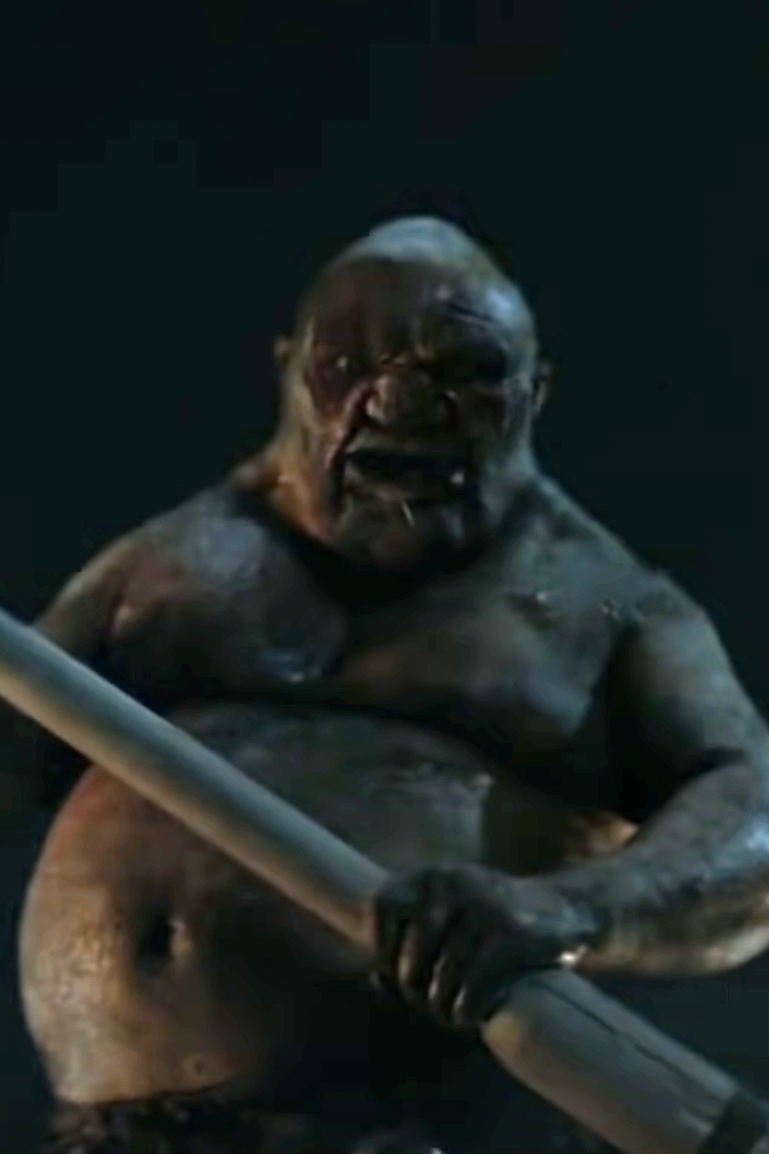
Spencer Althouse, Warner Bros.
24.The Creature Shop would also work on developing non-actor creatures. Sculptors and engineers built animatronics and models, and the Visual Effects team would turn them into computer-generated models that could be animated. For example, this is how they were able to create the Basilisk. A giant snake head with moving eyes, nostrils, and mouth was crafted for close-up shots, but the rest of the Basilisk's body was created with CGI.
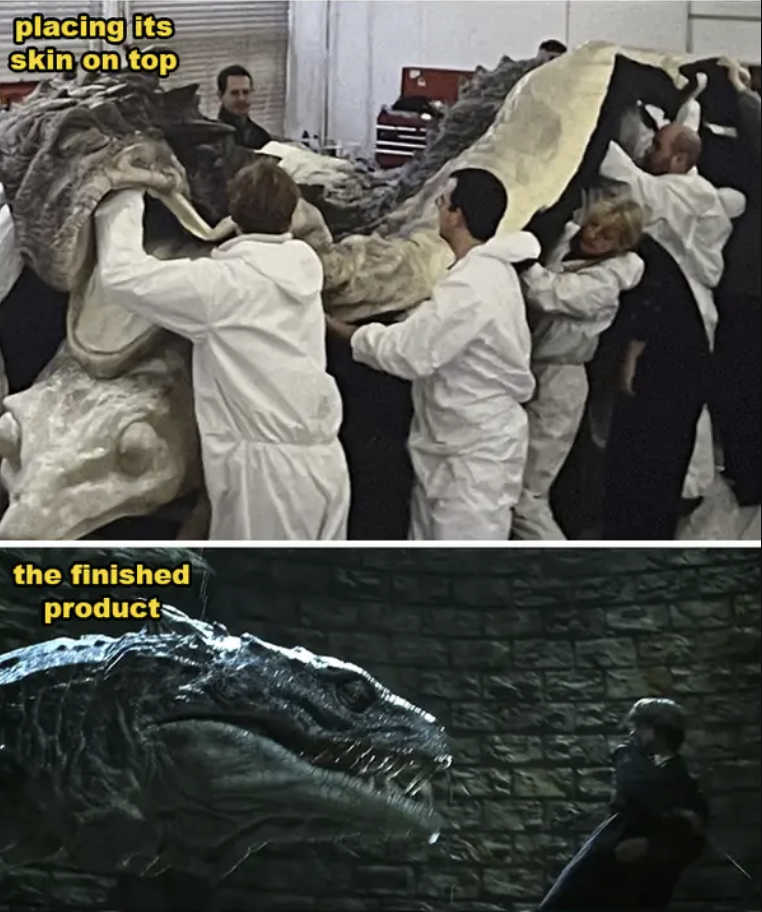
25.A full-body werewolf suit – including stilts and an animatronic head – was actually created for actor David Thewlis during Professor Lupin's transformation scene, but it proved too difficult to operate. After months of rehearsals, they ultimately had to scrap the idea and resort mostly to visual effects.
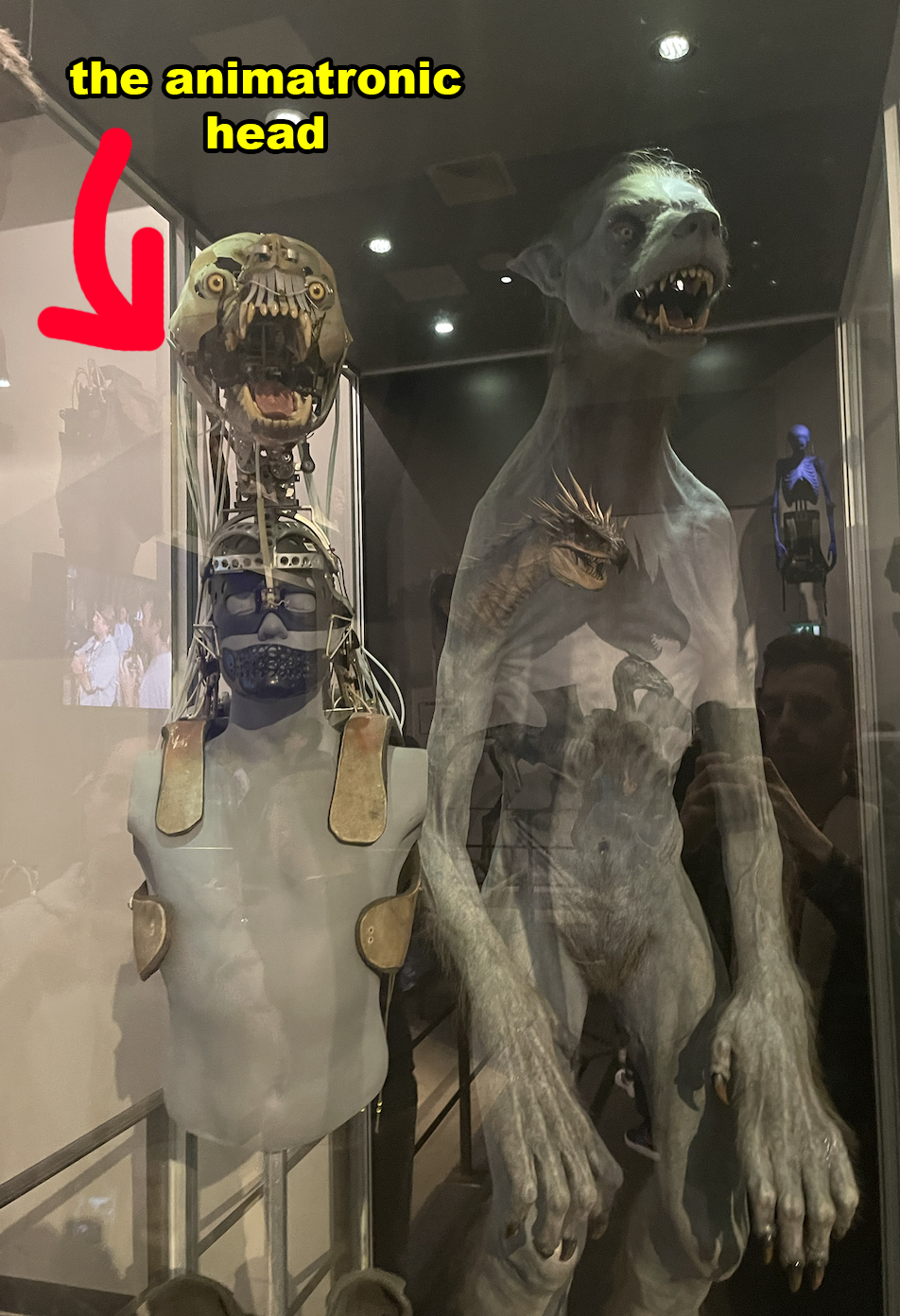
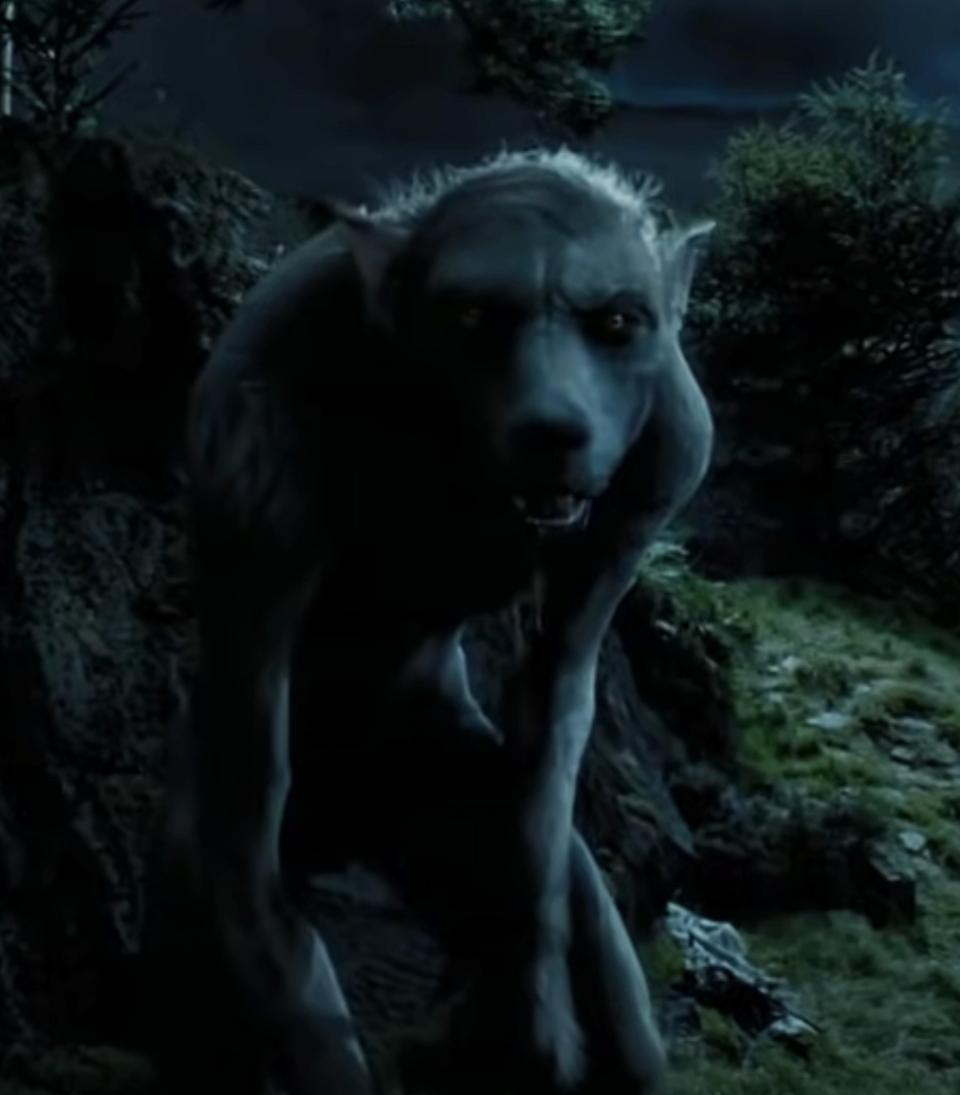
Spencer Althouse, Warner Bros.
The makeup department also created several stages of prosthetics to capture each moment of Lupin's transformation into a werewolf. Each look took four hours to apply to the actor.
26.Sixty different actors played goblins during the Gringotts scenes in Deathly Hallows – Part 2, and many of them were portrayed by female actors. However, female goblins didn't exist in the Harry Potter books, so all of them played male goblins in the movie.
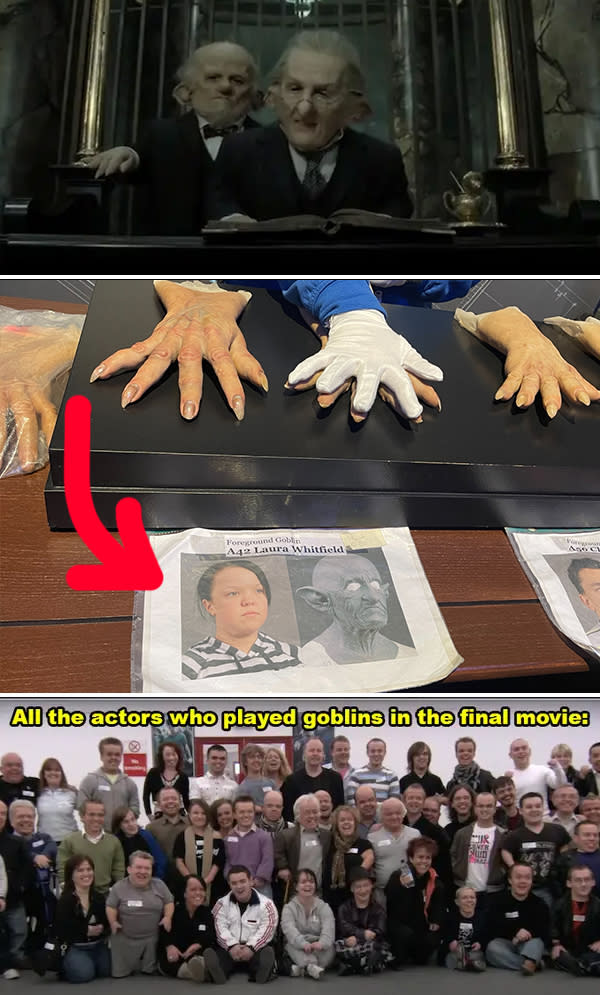
Only one female goblin has ever been mentioned in the Wizarding World. Though she wasn't given a name, she was a jazz singer at The Bling Pig speakeasy in Fantastic Beasts and Where to Find Them.
27.Several steps were taken in order to turn every actor into a different-looking goblin, first starting with a cast of each person's face. Makeup artists would then sculpt goblin features on top of the silicone molds, body parts would be painted, wigs would be made and applied one hair at a time, and then all of the body parts – teeth, ears, etc. – would be applied and touched up with makeup to blend seamlessly together.
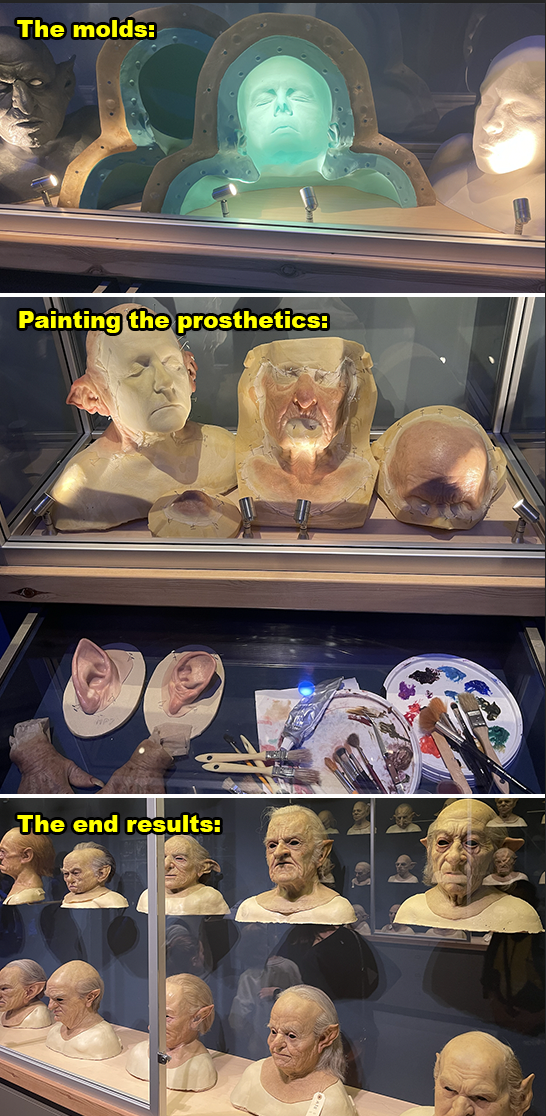
28.The Props Department created over 38,000 pieces of treasure to fill Bellatrix Lastrange's bank vault for the replication scene in the final movie. Each piece was made of rubber because having real brass, copper, and gold goblets and chalices would have been too dangerous (and costly). The cups were then scanned and digitized to look like they were duplicating in the actual scene. In fact, out of the 7,010 Hufflepuff cups in the vault, only four were gold-plated and made of copper – these were used specifically for close-up shots.
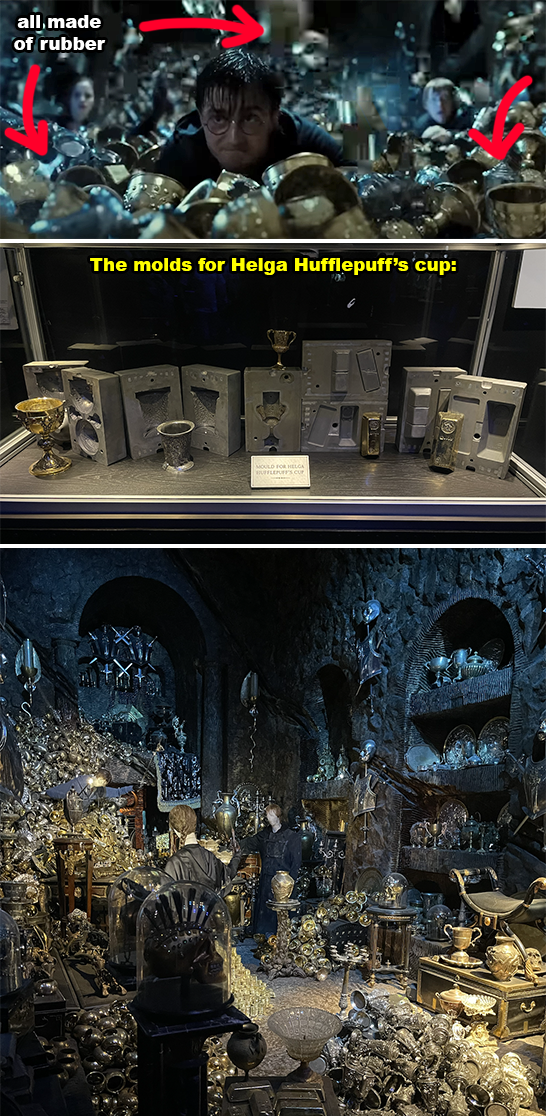
29.They also created over 210,000 detailed coins to represent the Wizarding currency. In the first movie, all of the coins – bronze Knuts, silver Sickles, and gold Galleons – were real and made of metal. However, in the final film, the coins were made of plastic and glued together in giant stacks.
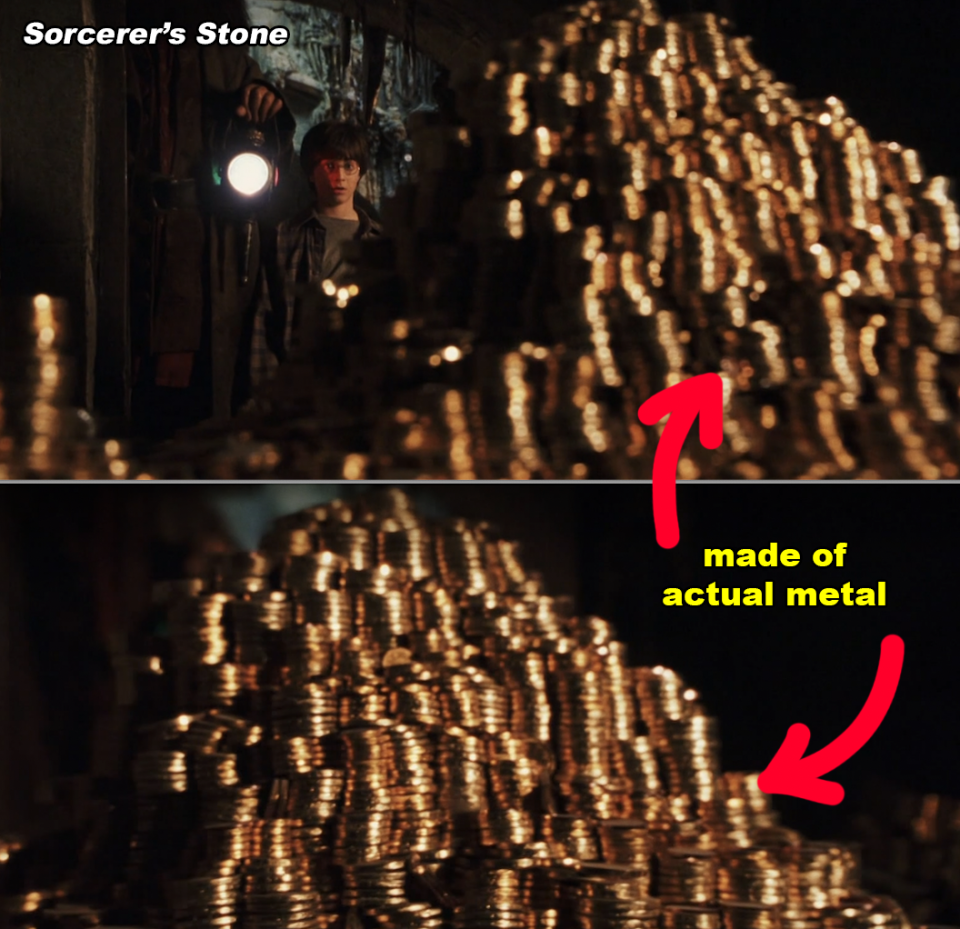
30.The Weasleys' Wizard Wheezes joke shop was only featured on screen for 90 seconds in Half-Blood Prince, but 40,000 props were created to fill the store with everything from Nosebleed Nougats, to Puking Pastilles, to love potions. Over 140 different kinds of products were created and sold in their store.
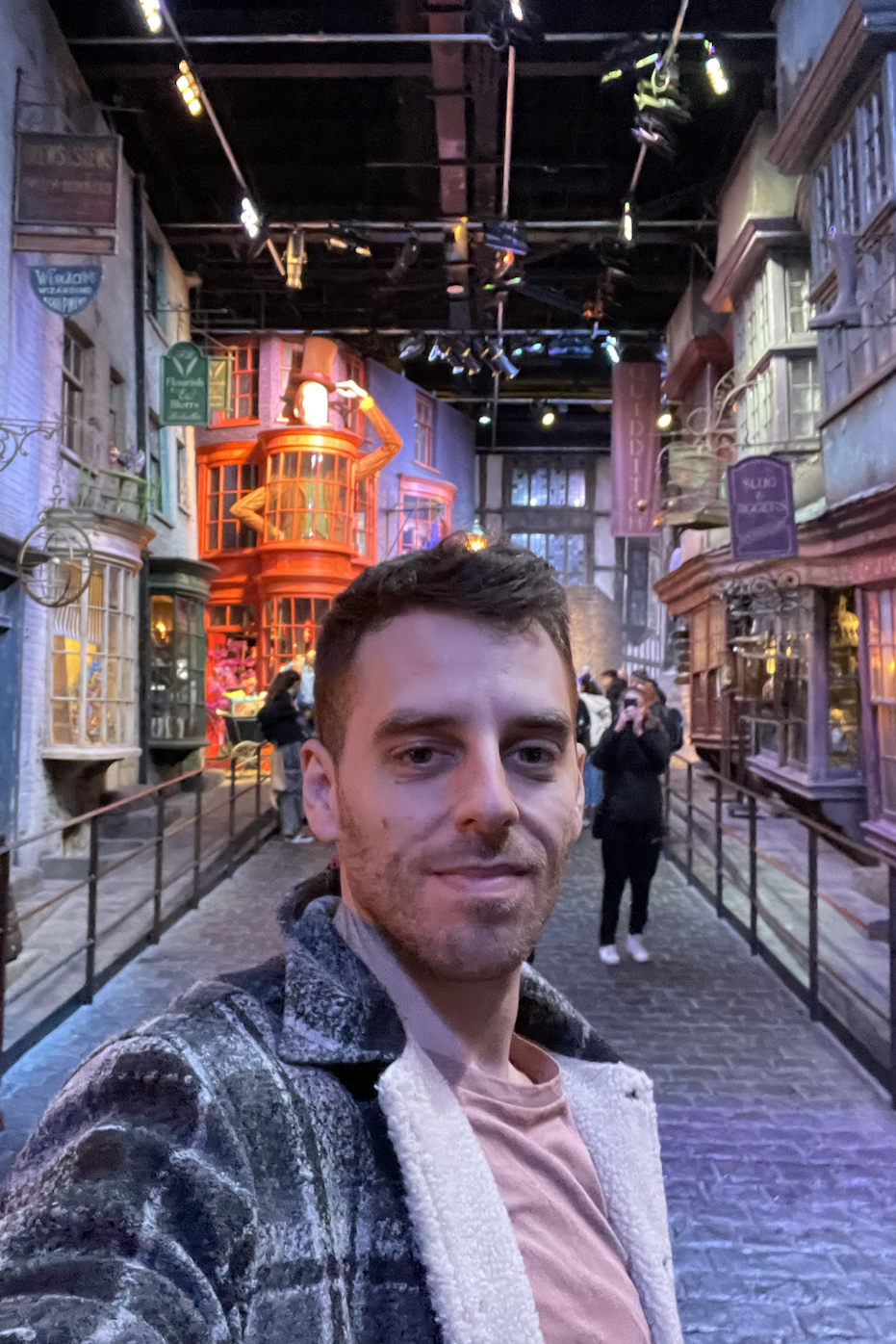
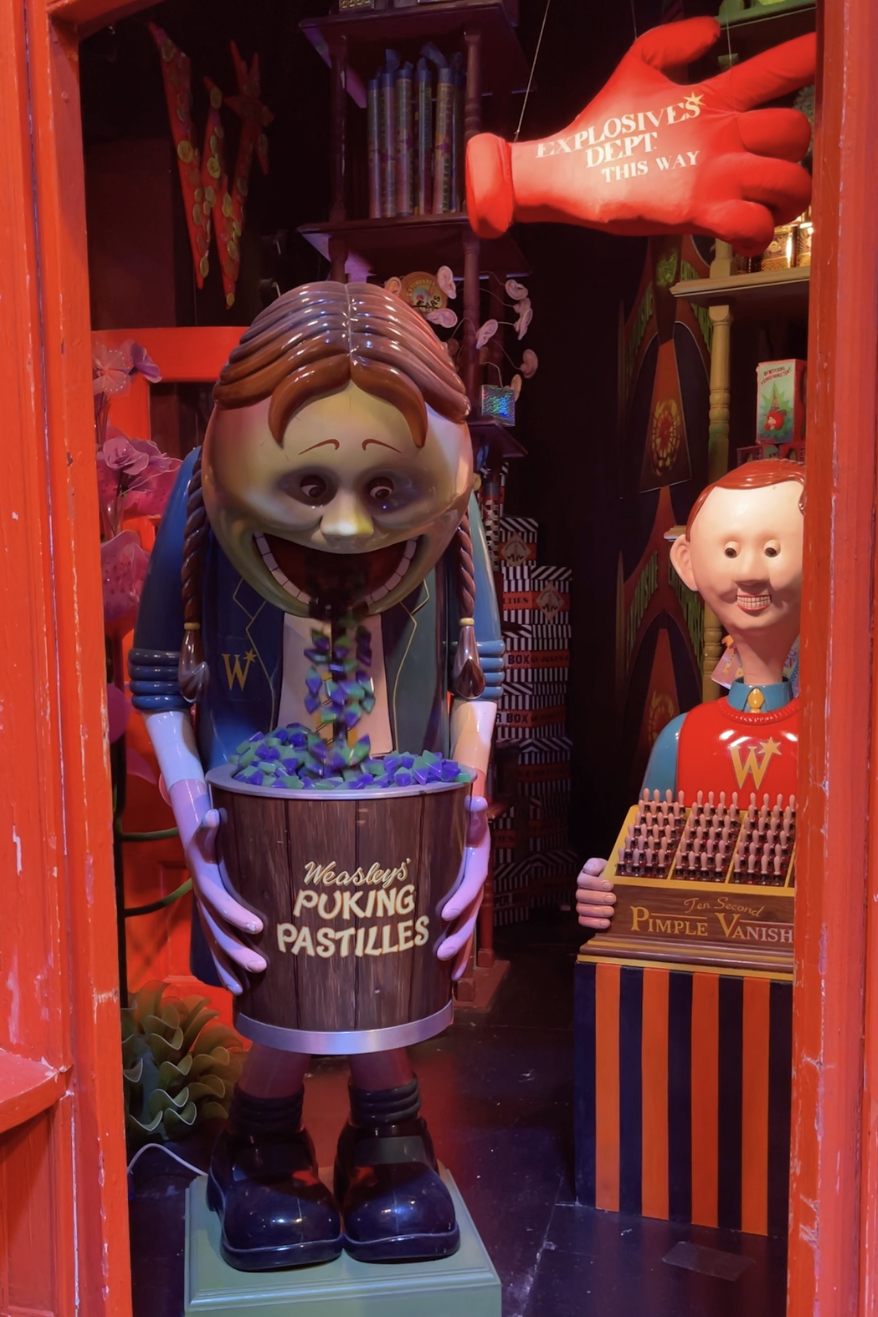
Spencer Althouse
31.The actual layout of Hogwarts changes in every movie, simply because each of the film's directors needed things in different places. Not worried about continuity errors, they figured that "if the staircases could move in the movies then so could everything else." As a result, all of the rooms and grounds consistently change locations. For example, Hagrid's hut doesn't appear in some models of the castle, the Weeping Willow randomly shows up in the second film, and the Great Hall is in a completely different place in the final movie.
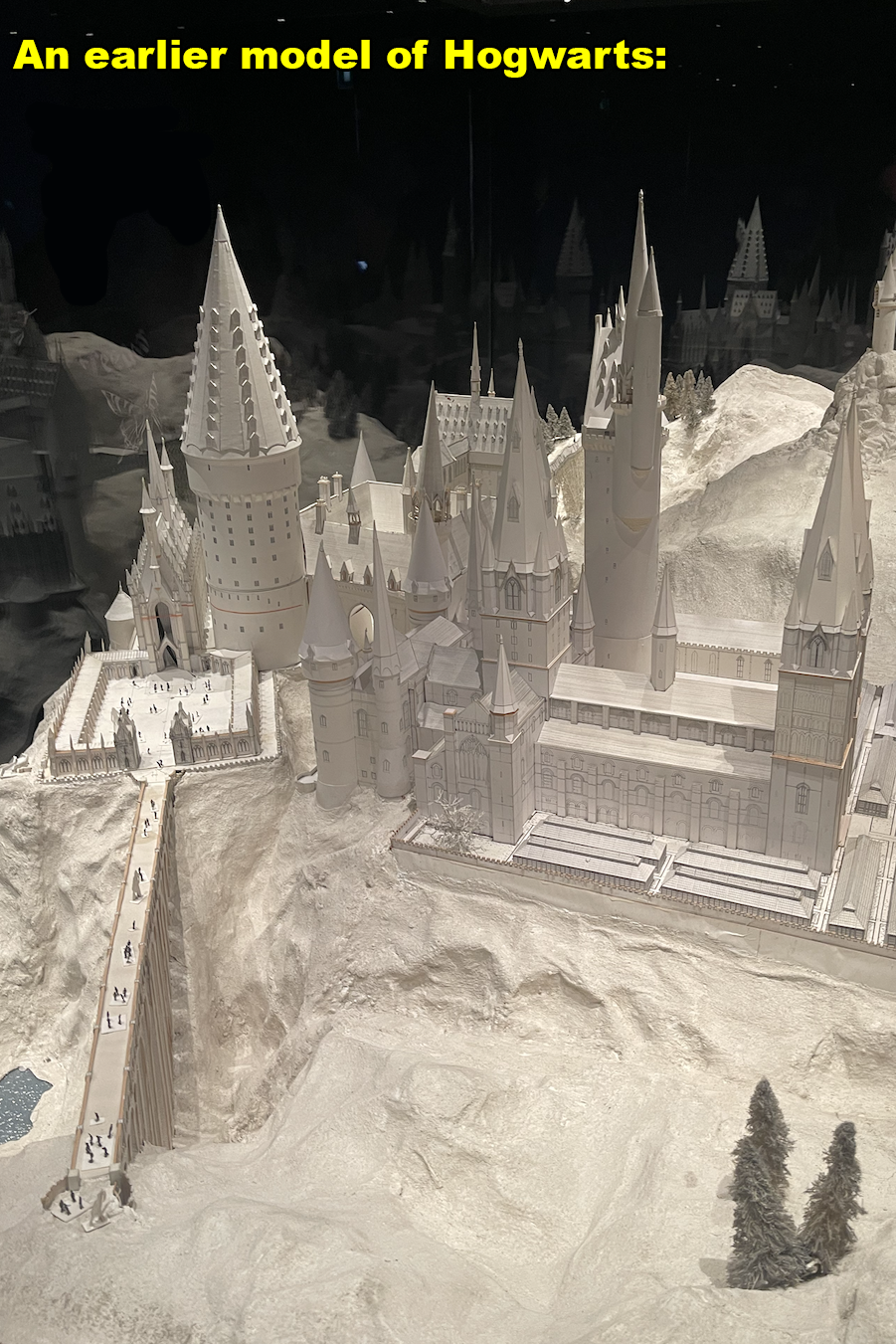
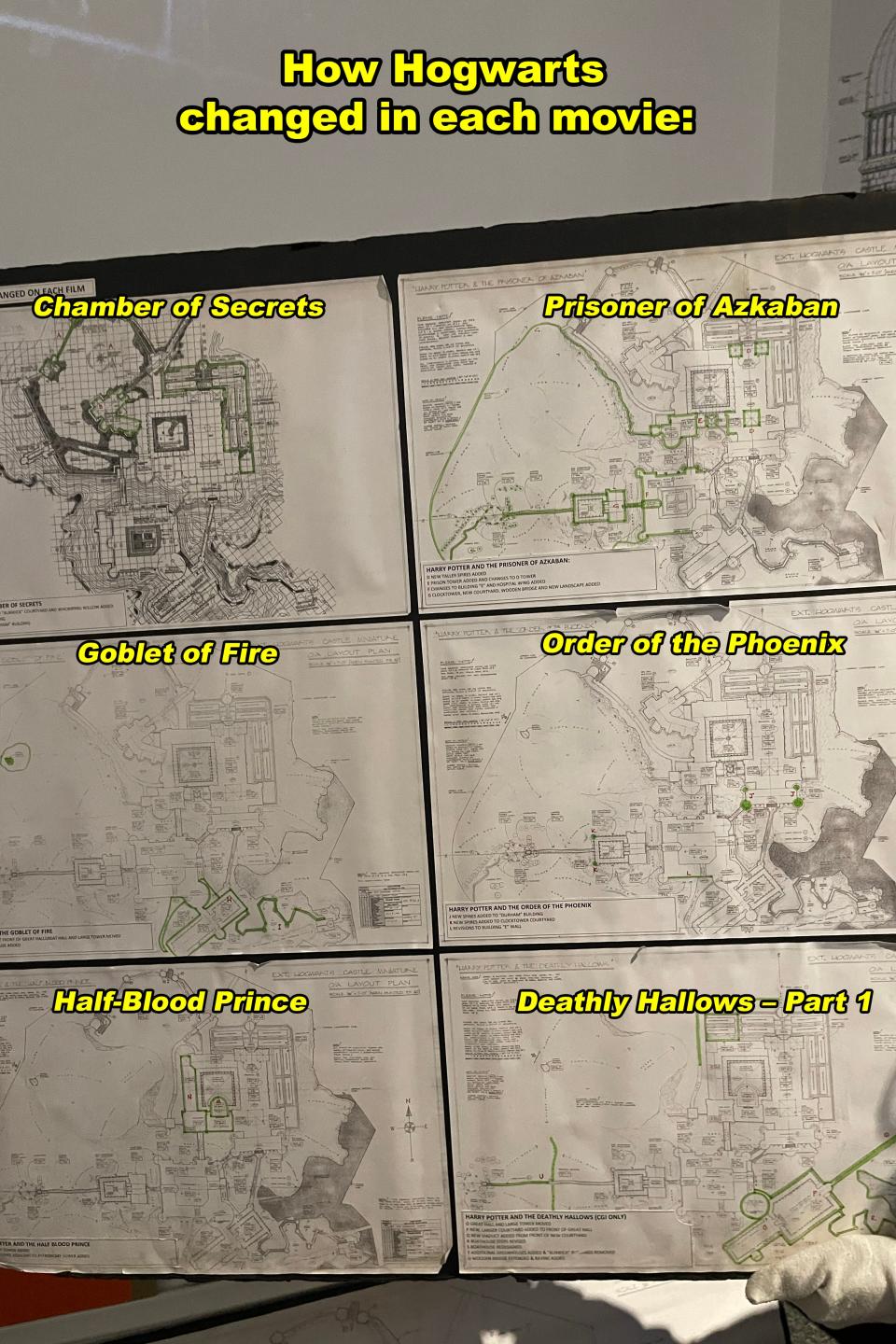
Spencer Althouse
Several other changes occurred throughout the series as well, like random courtyards appearing and disappearing, a clocktower being added in Prisoner of Azkaban, and four extra greenhouses popping up in the final movie.
32.And finally, over 4,000 people worked on all eight Harry Potter movies, from the stunt performers, to the animal trainers, to the makeup artists, and so on. The Wizarding World tour ends in Ollivanders' shop, which is stuffed to the brim with wands and boxes, each one inscribed with the name of every individual actor and crewmember who worked on the series.

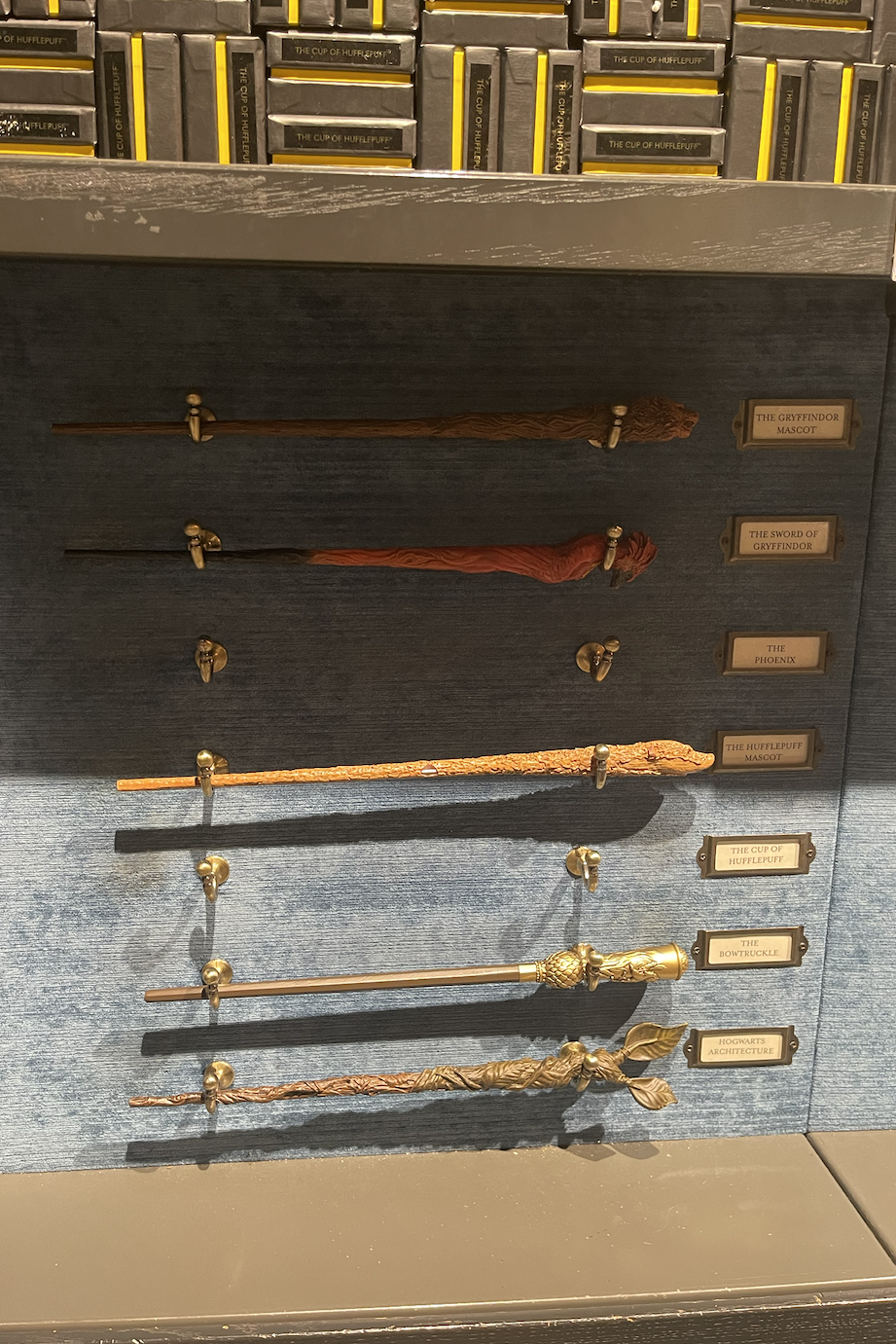
Spencer Althouse
If you want more information about the Warner Bros. Studio Tour then definitely check out their site here. They change the theme every few months (the theme when I went was "Magical Mischief"), so everything always feels super fresh and new. For reference, I spent several hours there, and I even visited with people who had never seen the movies or read the books, but we all genuinely had a great time. Enjoy!
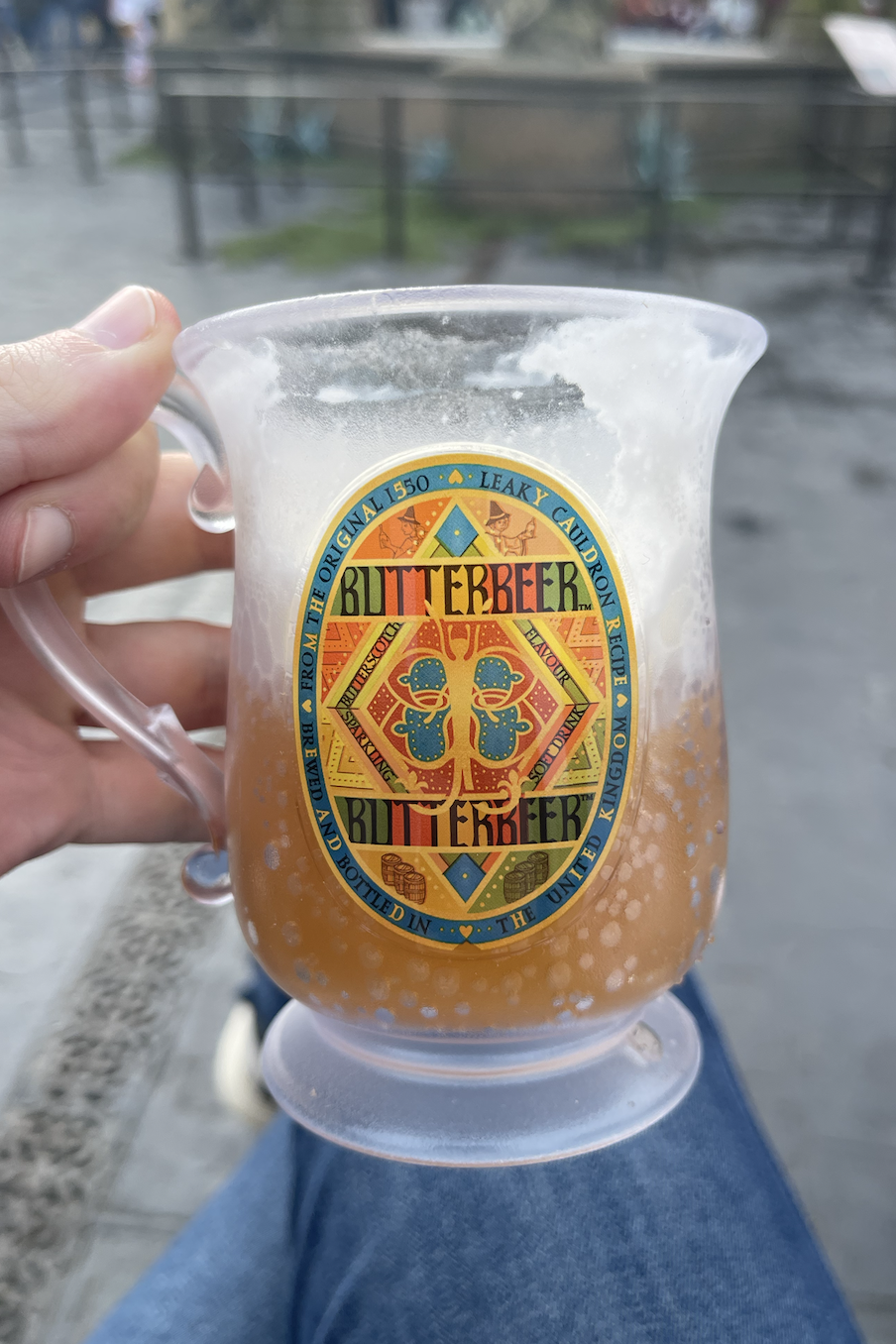
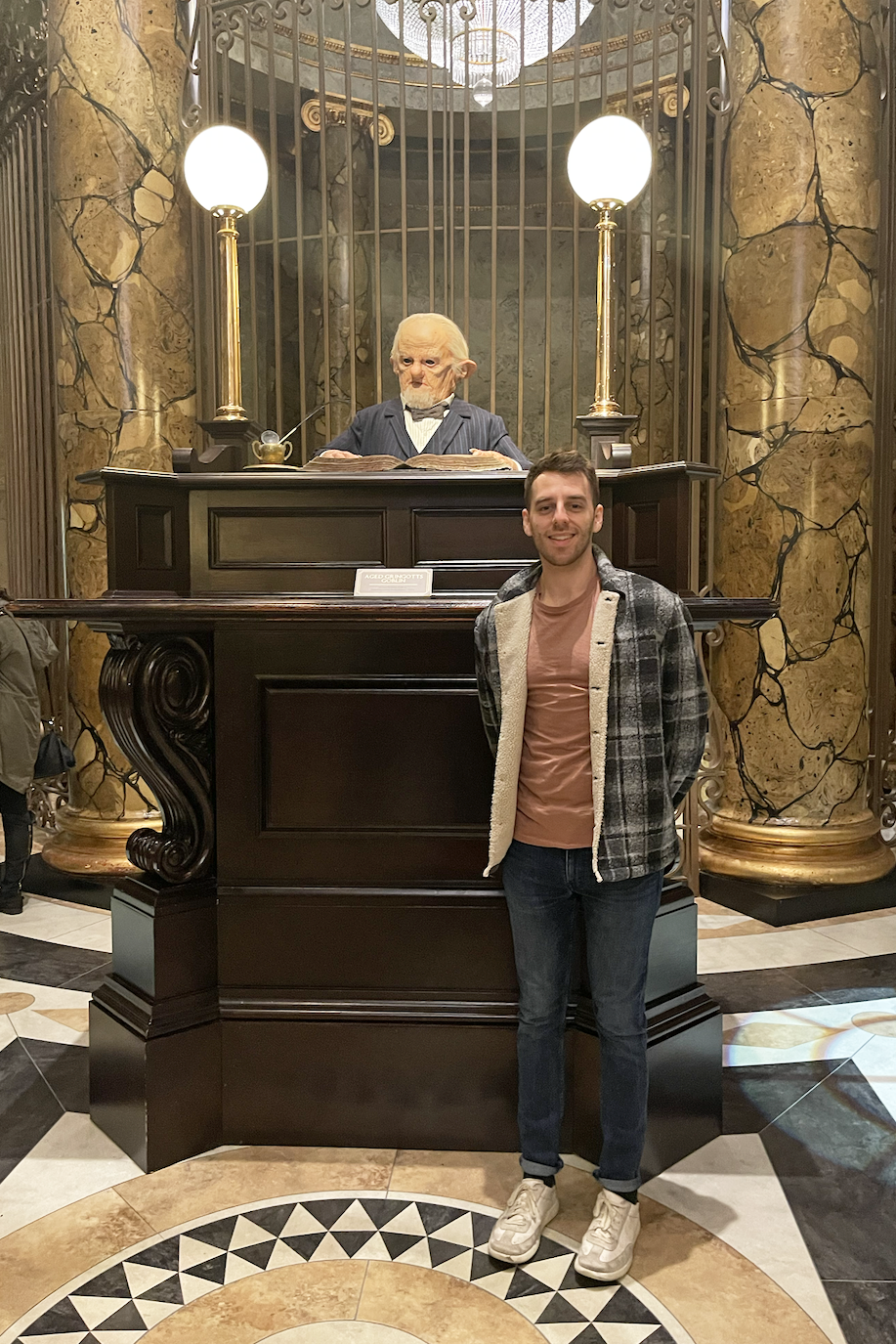
Spencer Althouse

